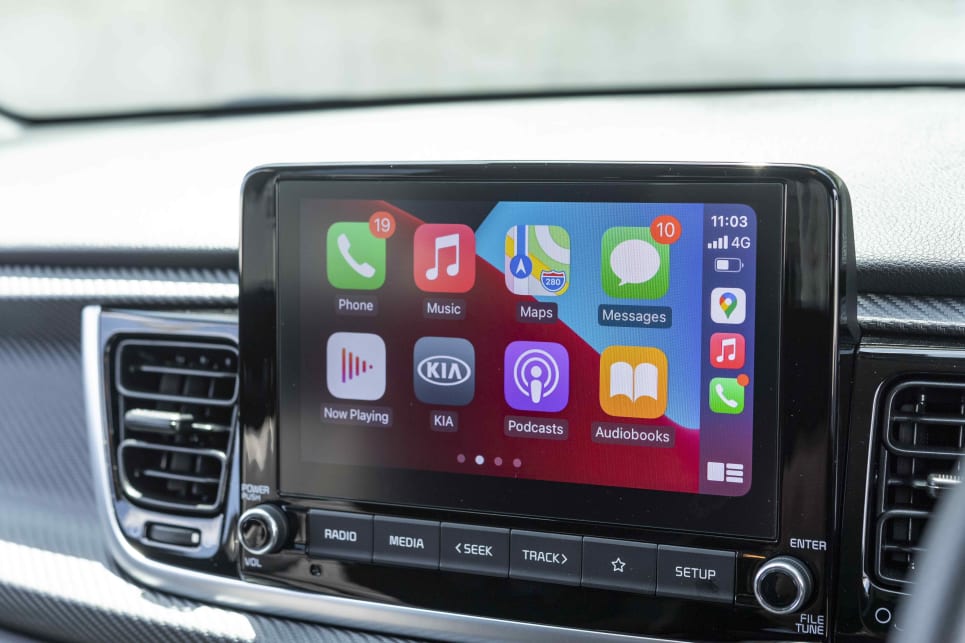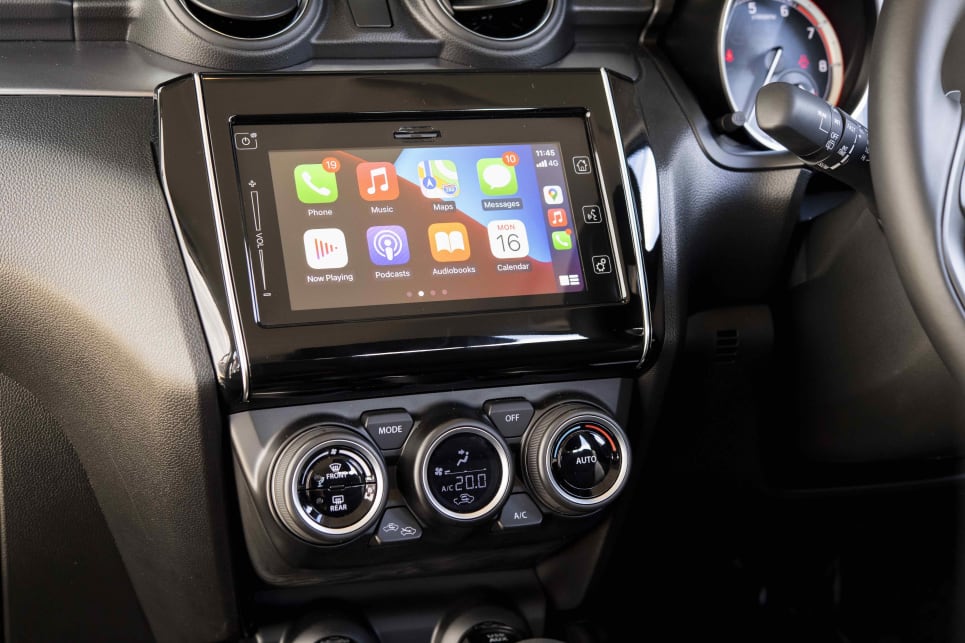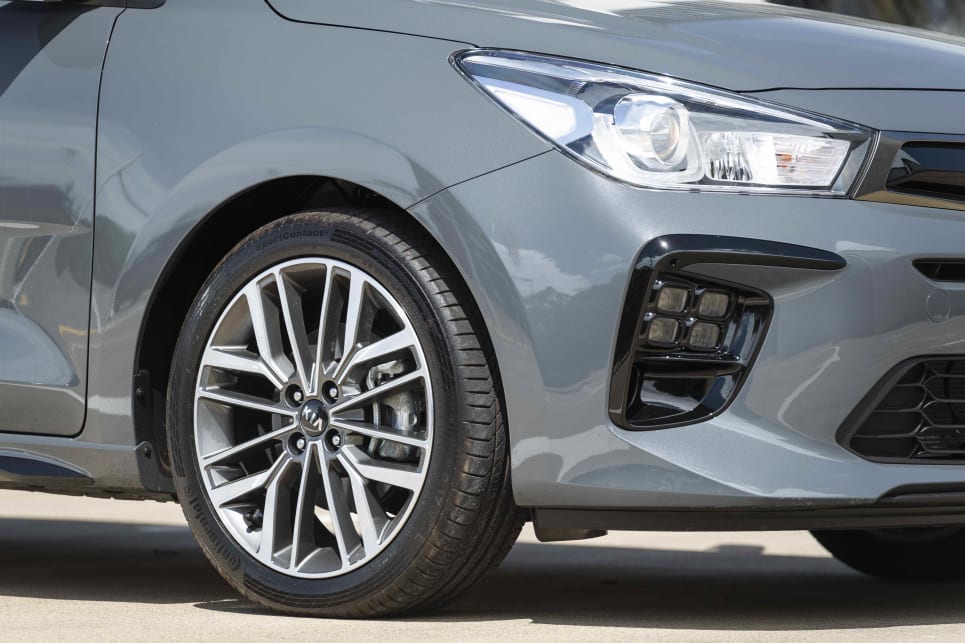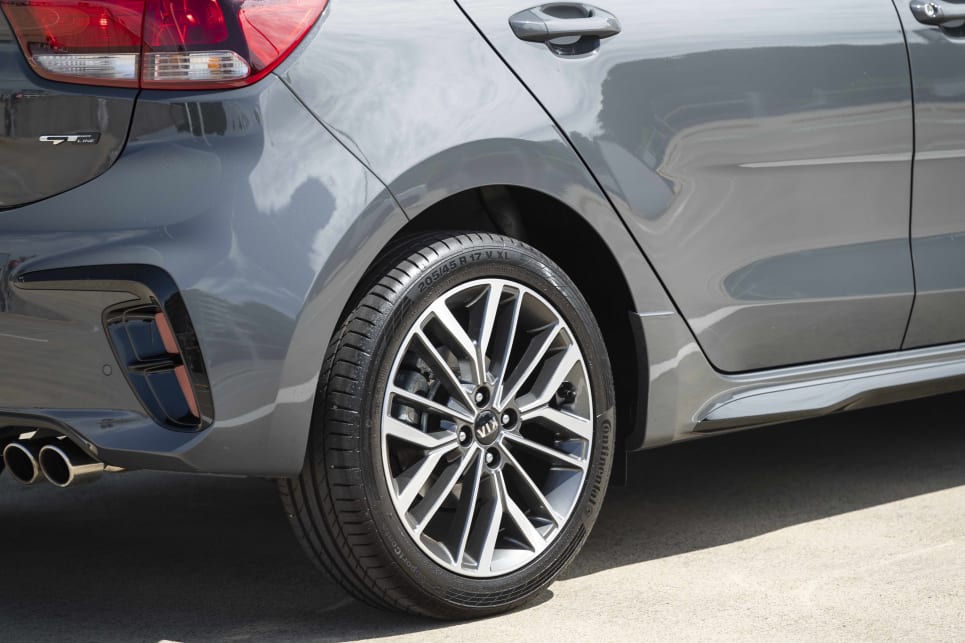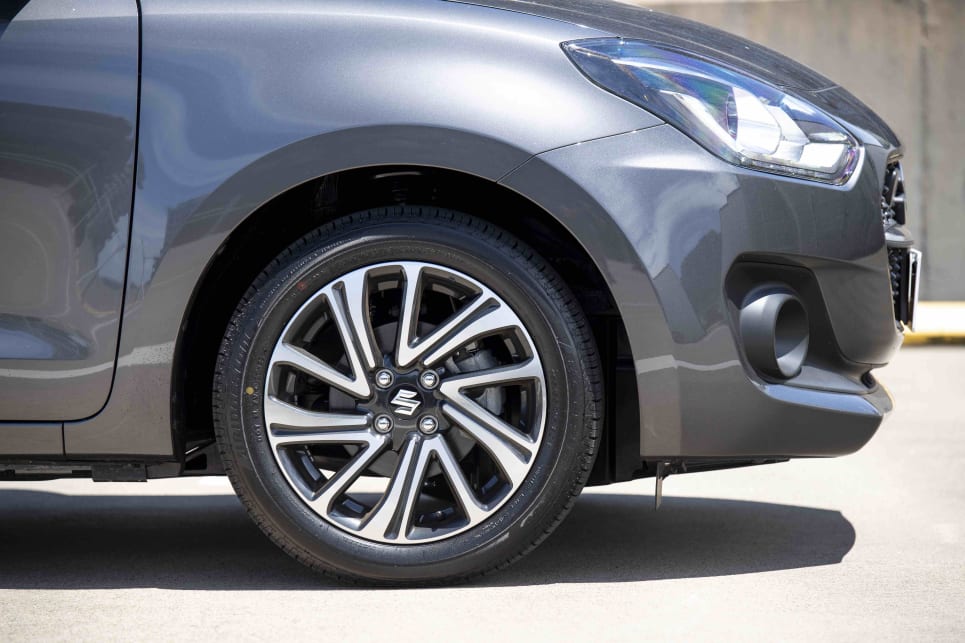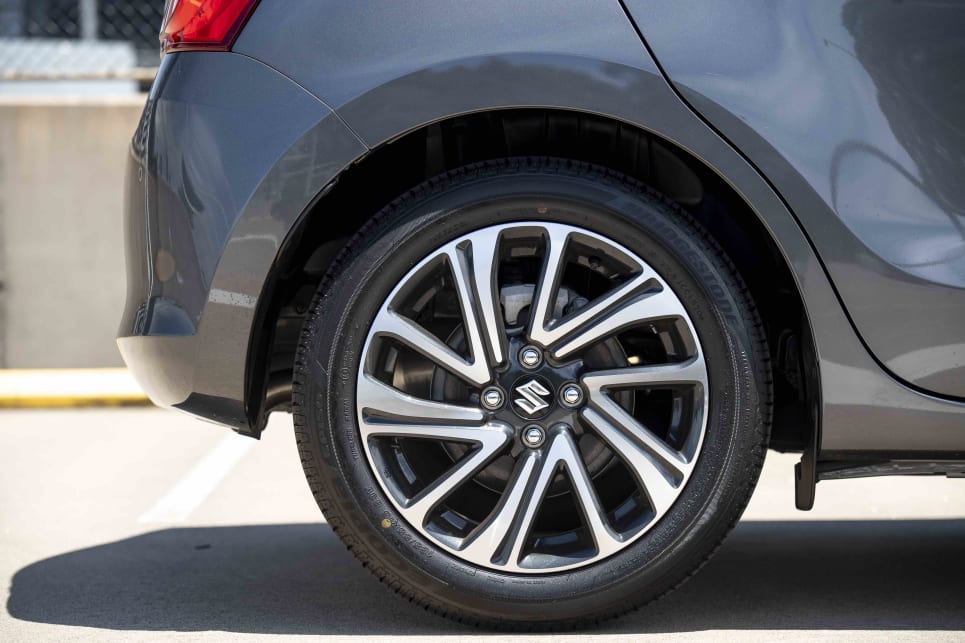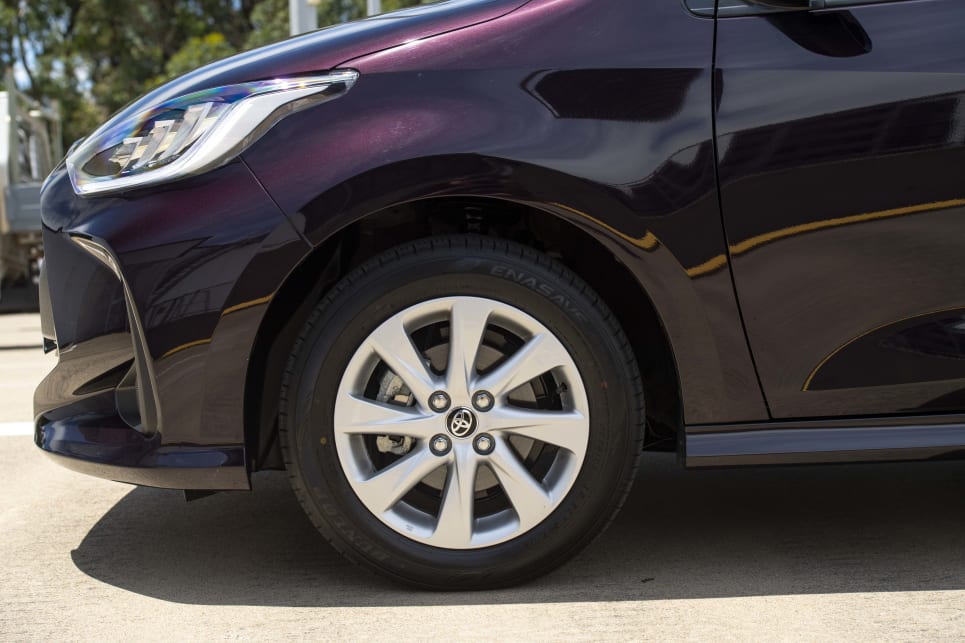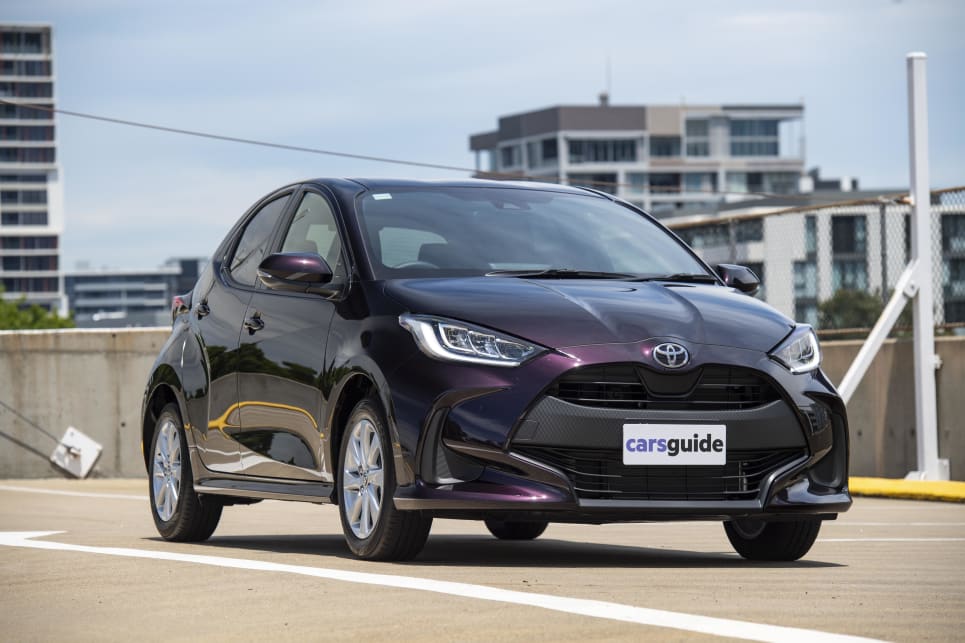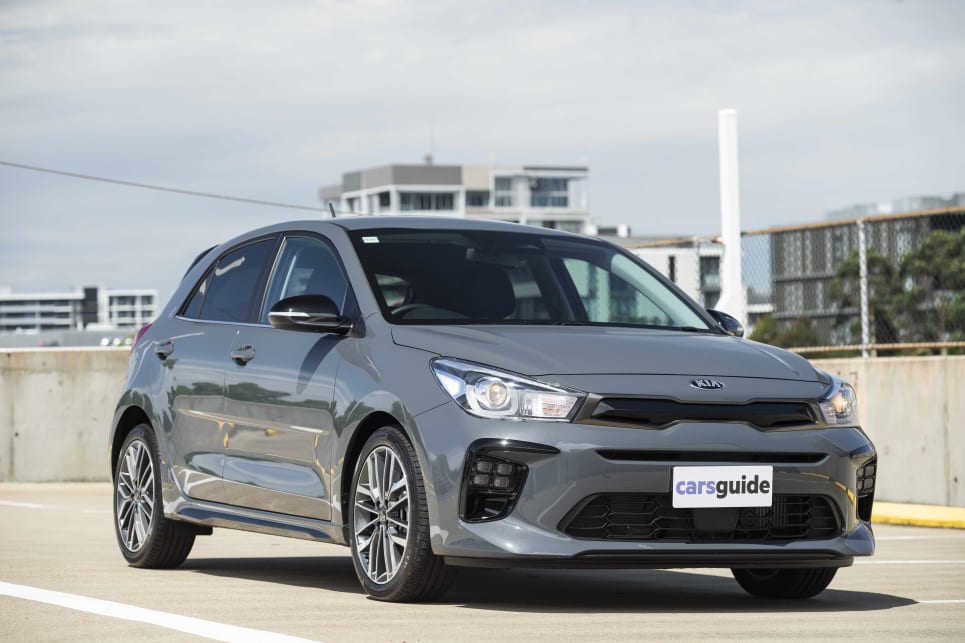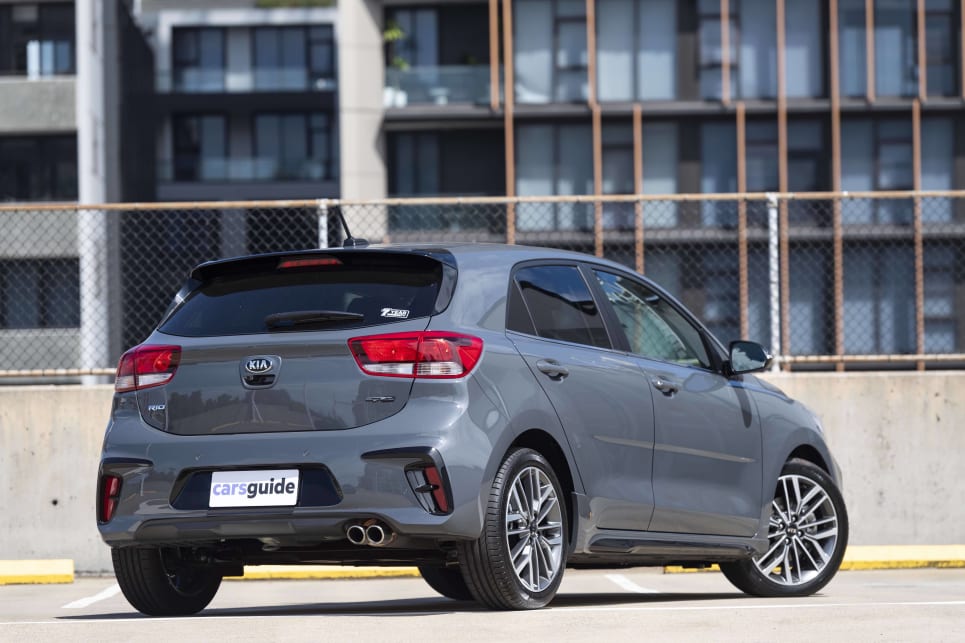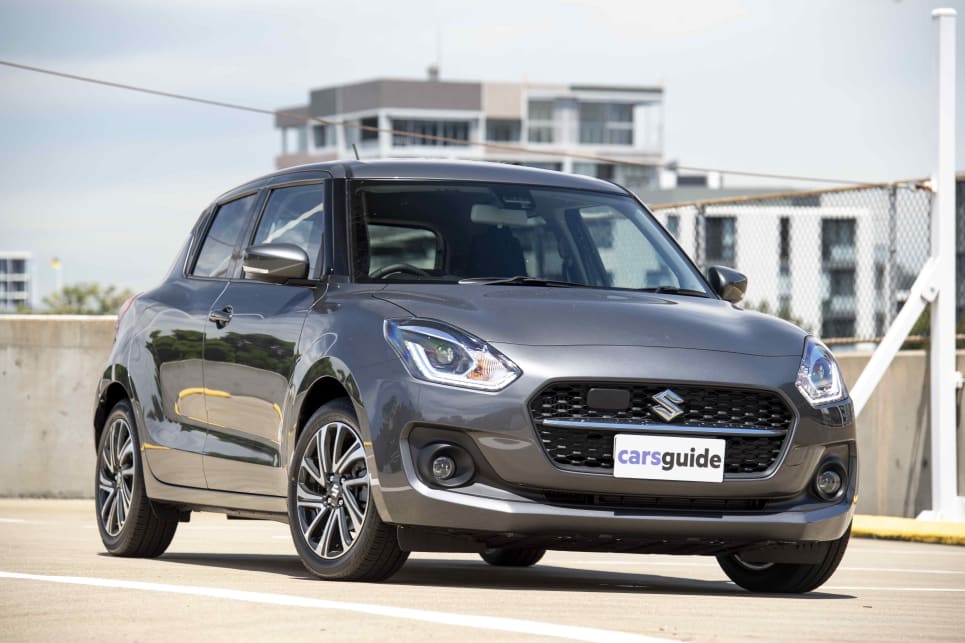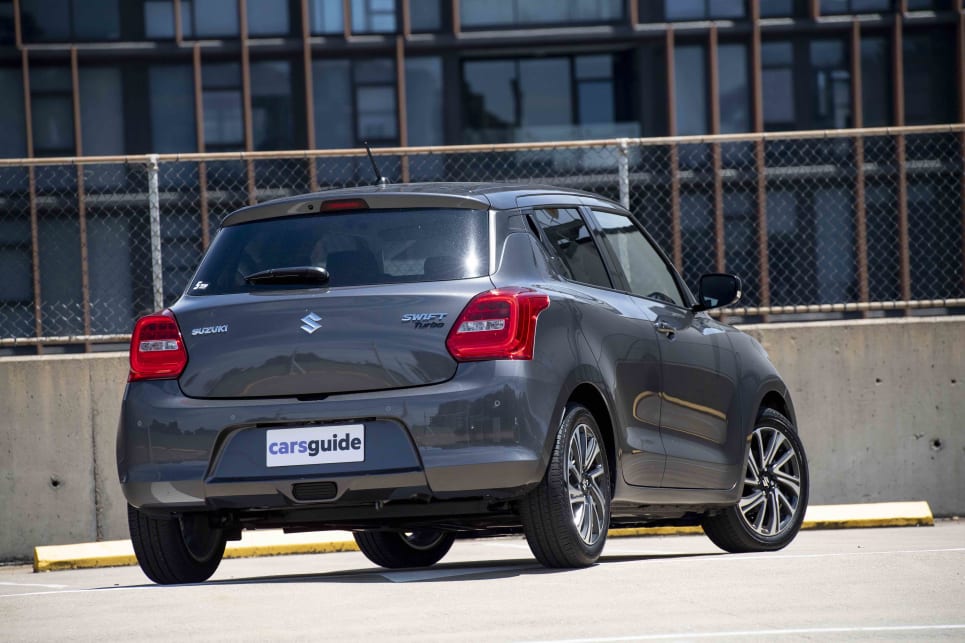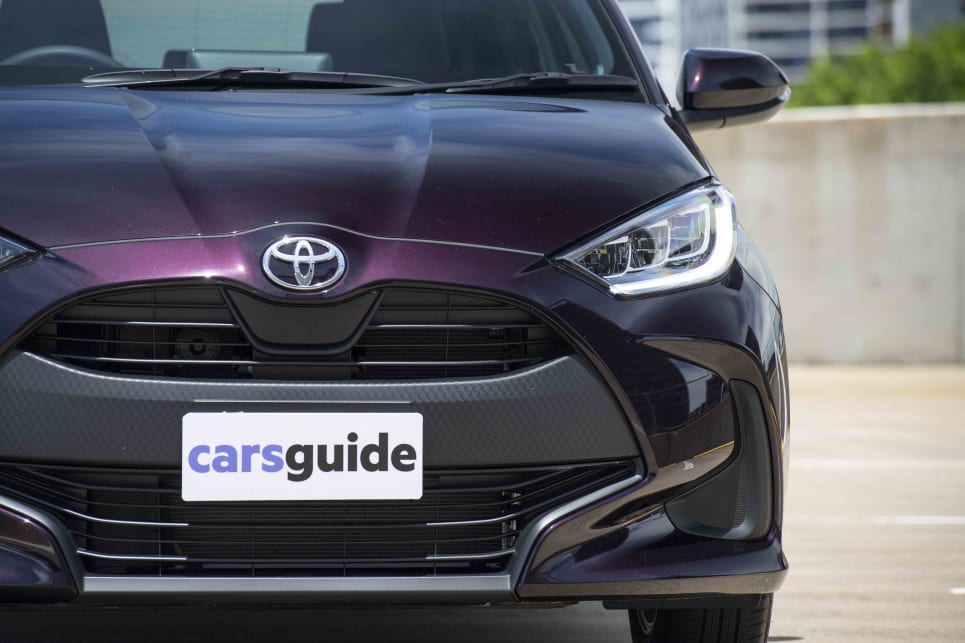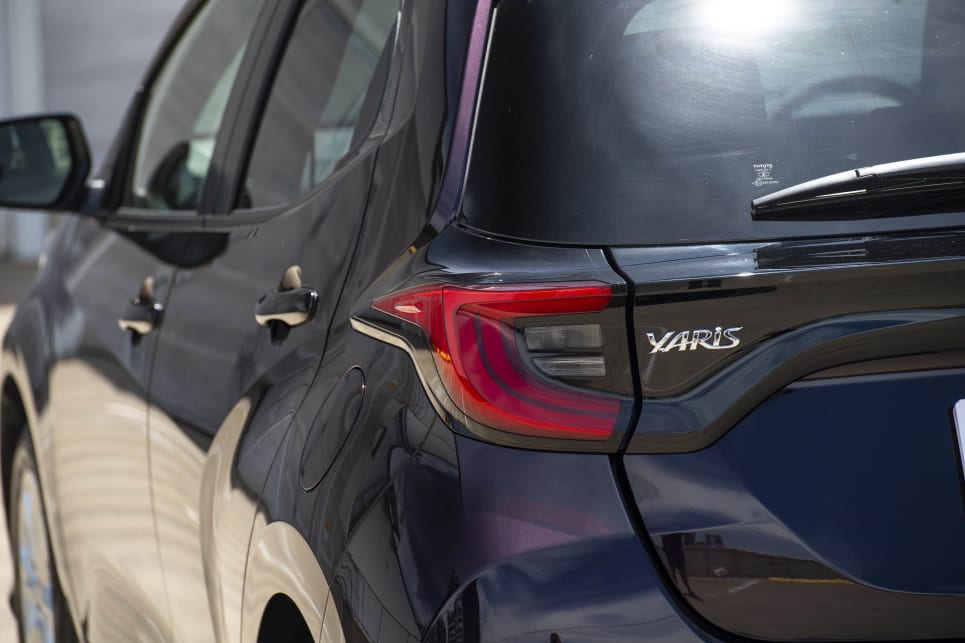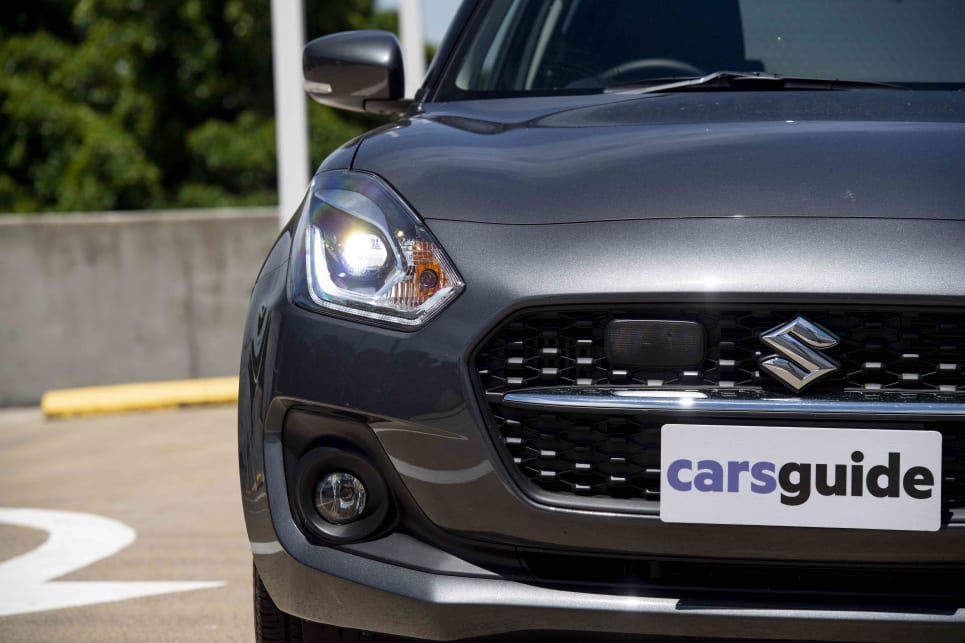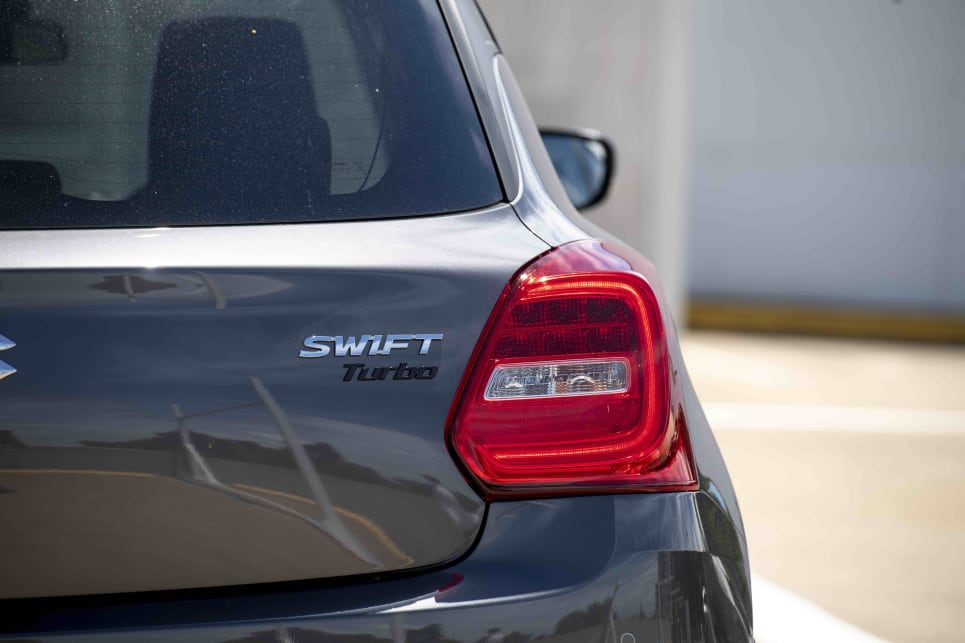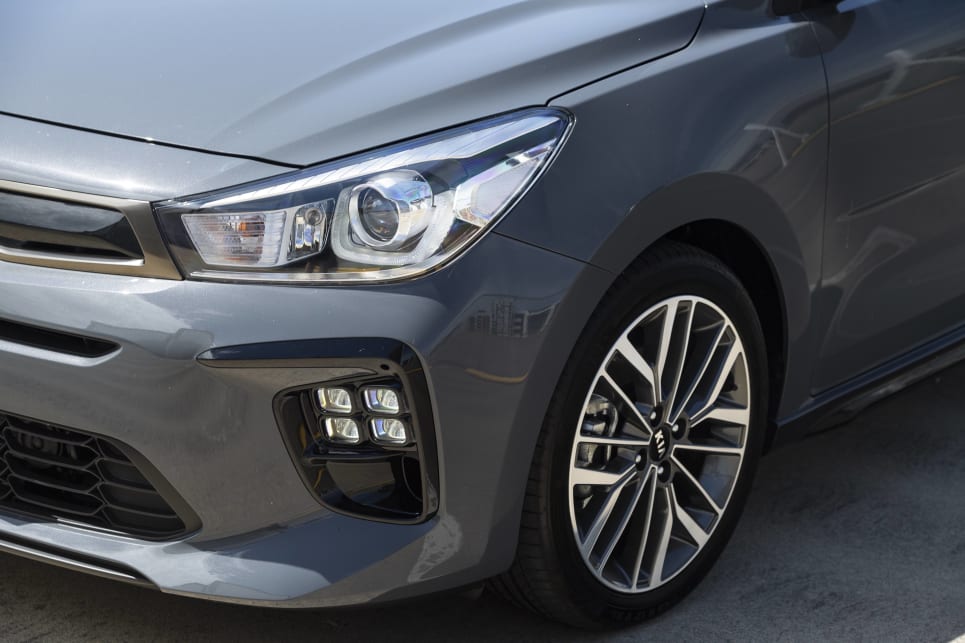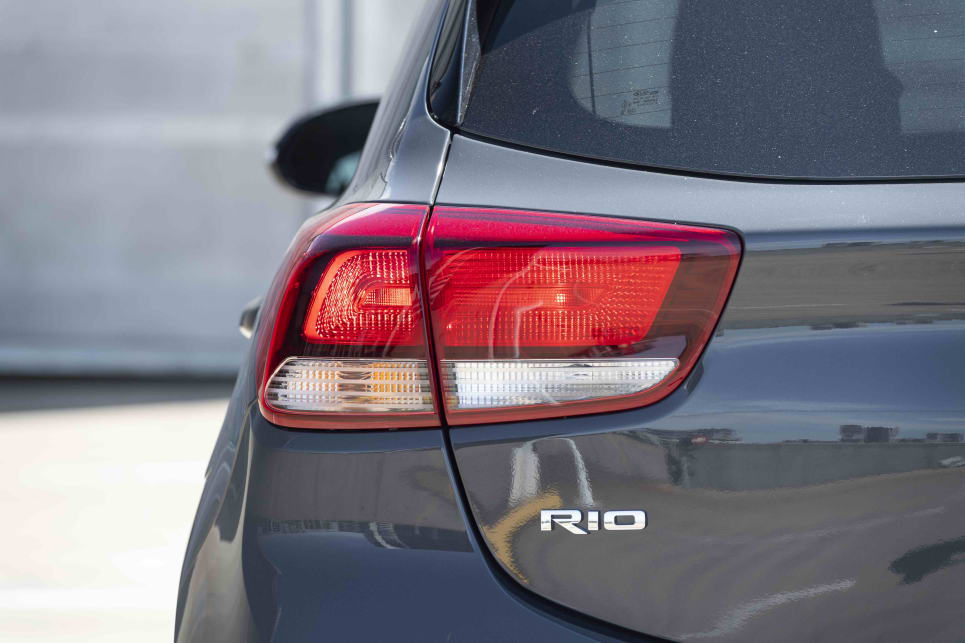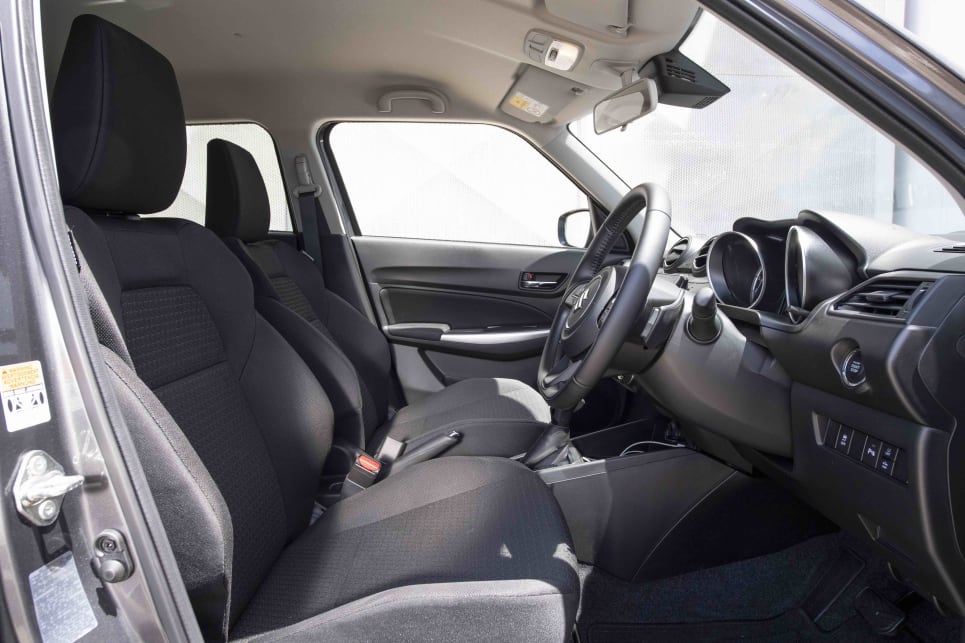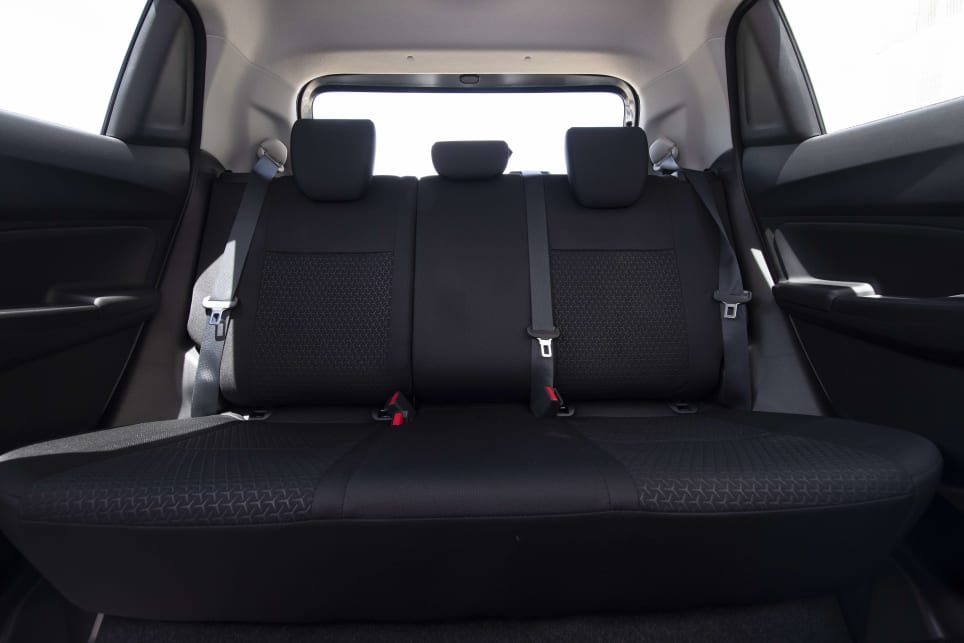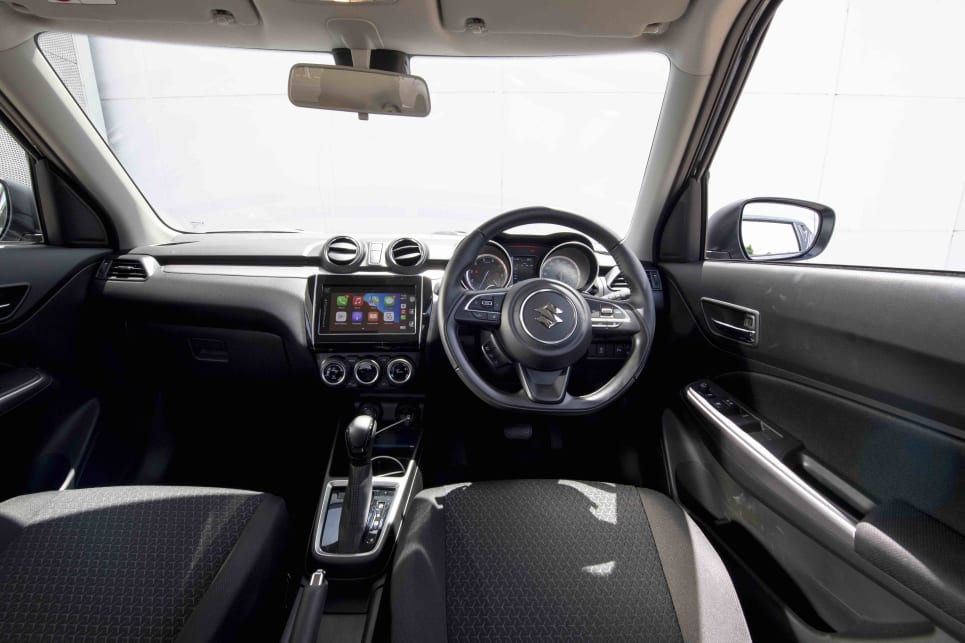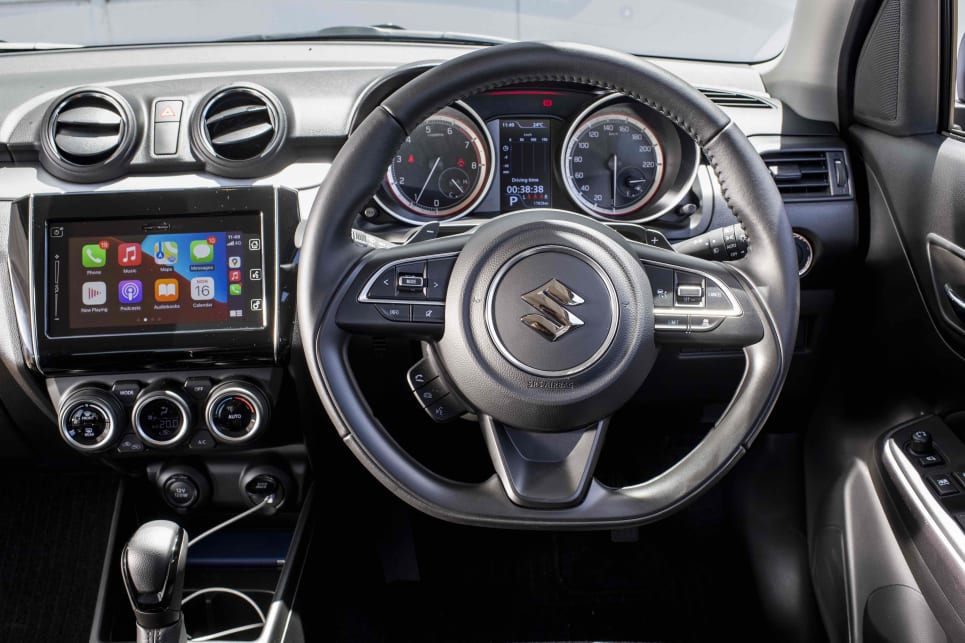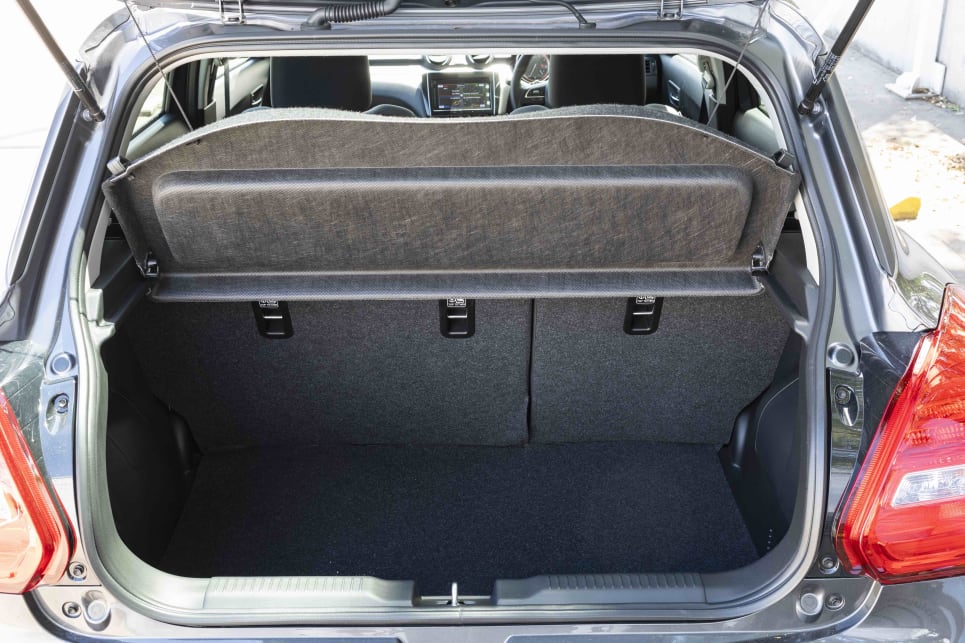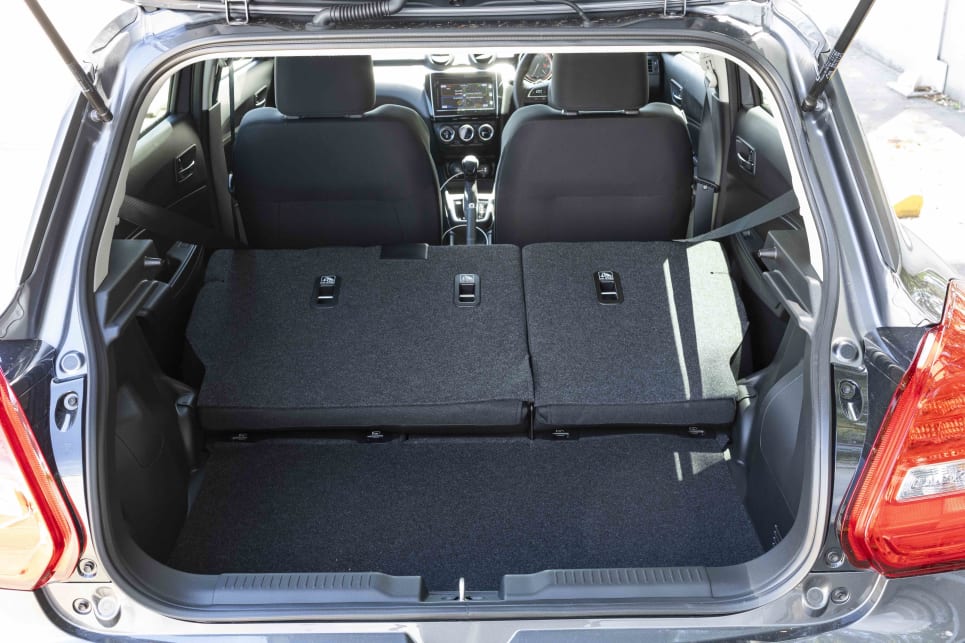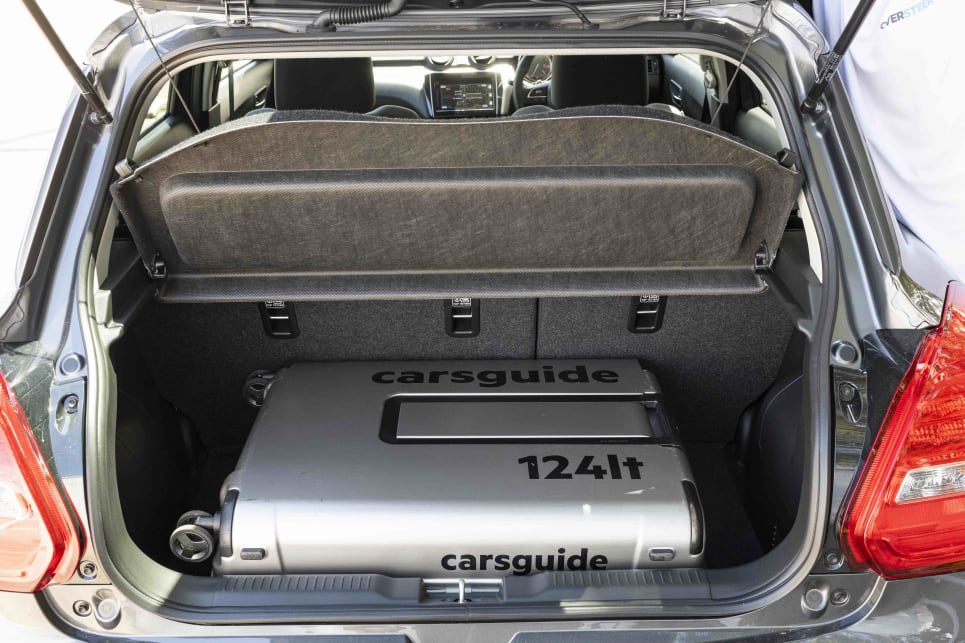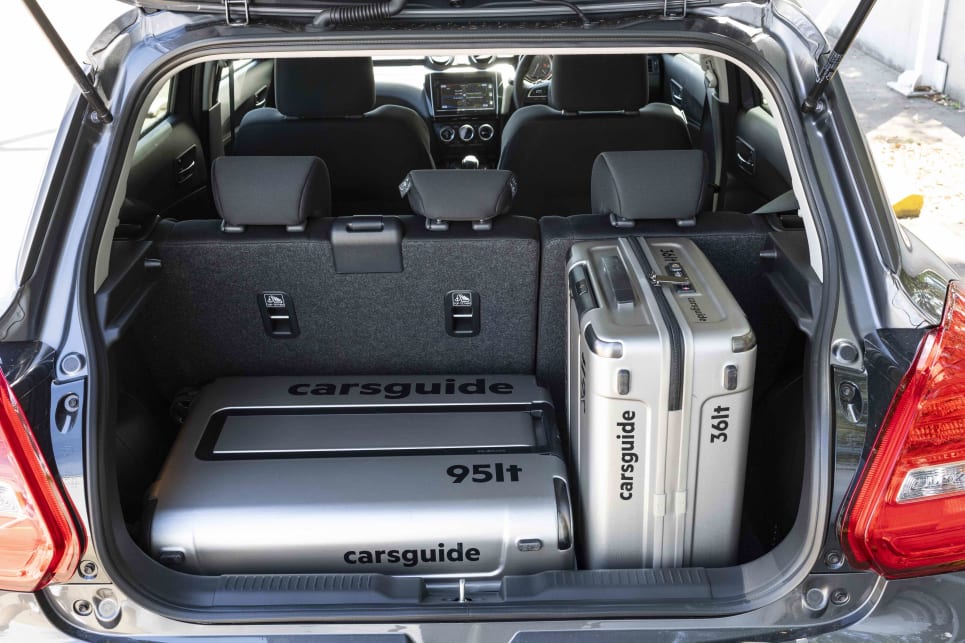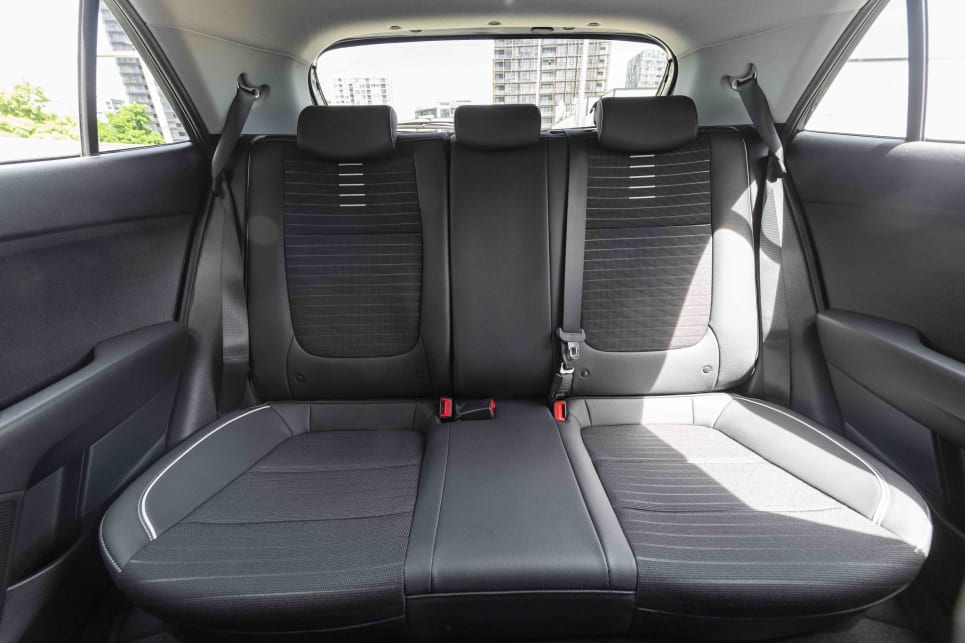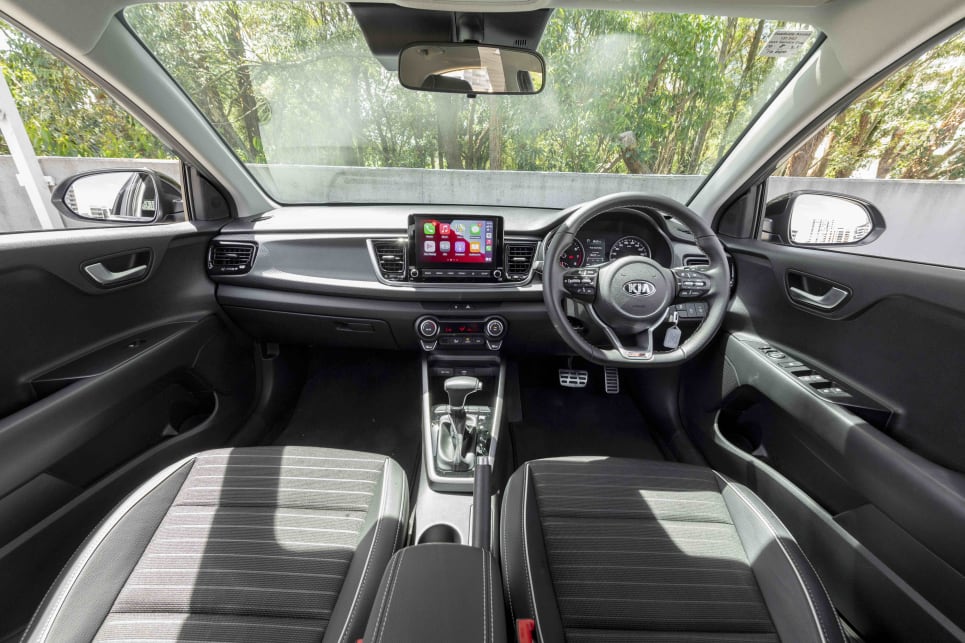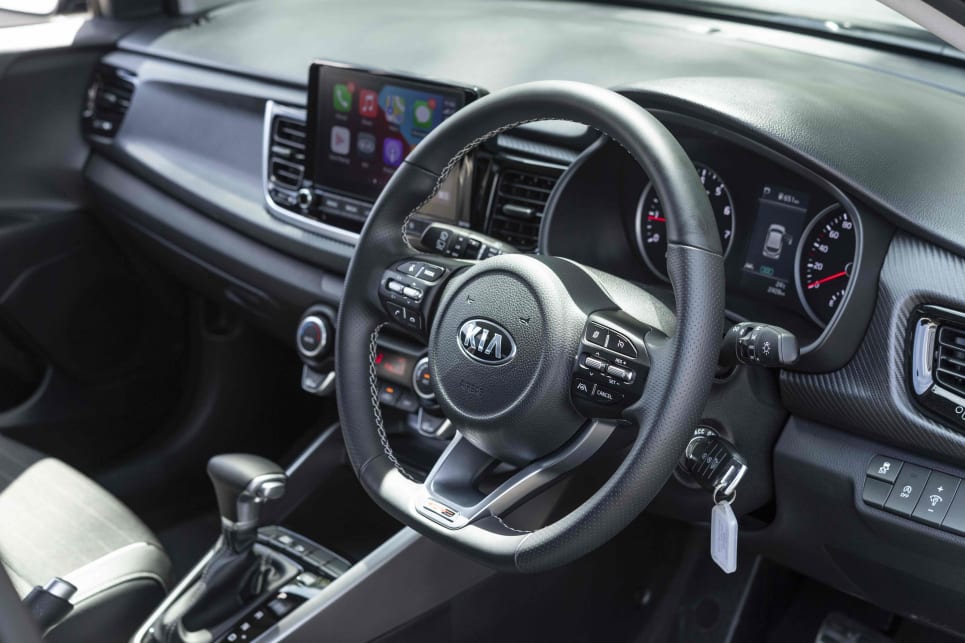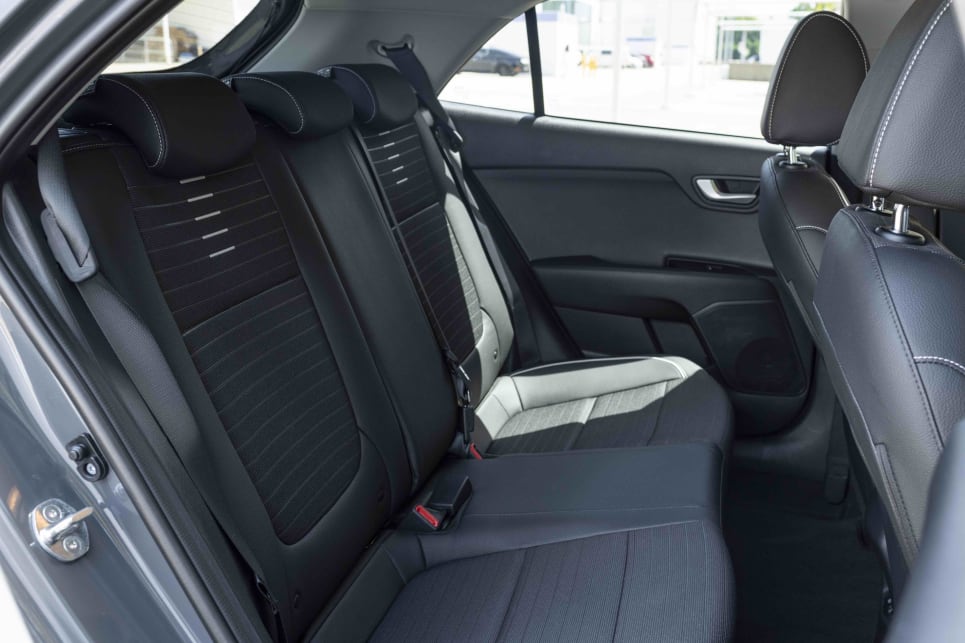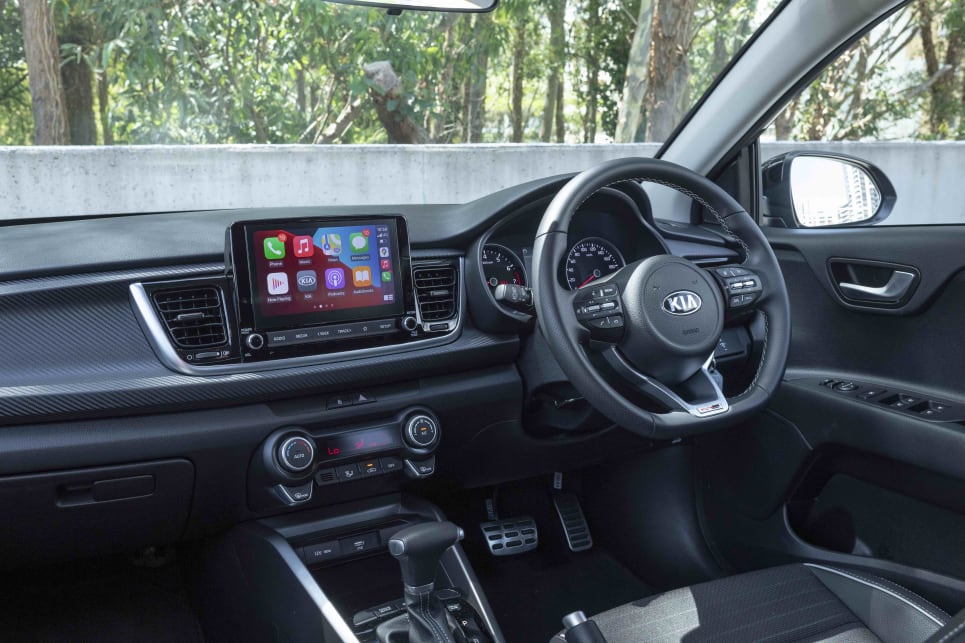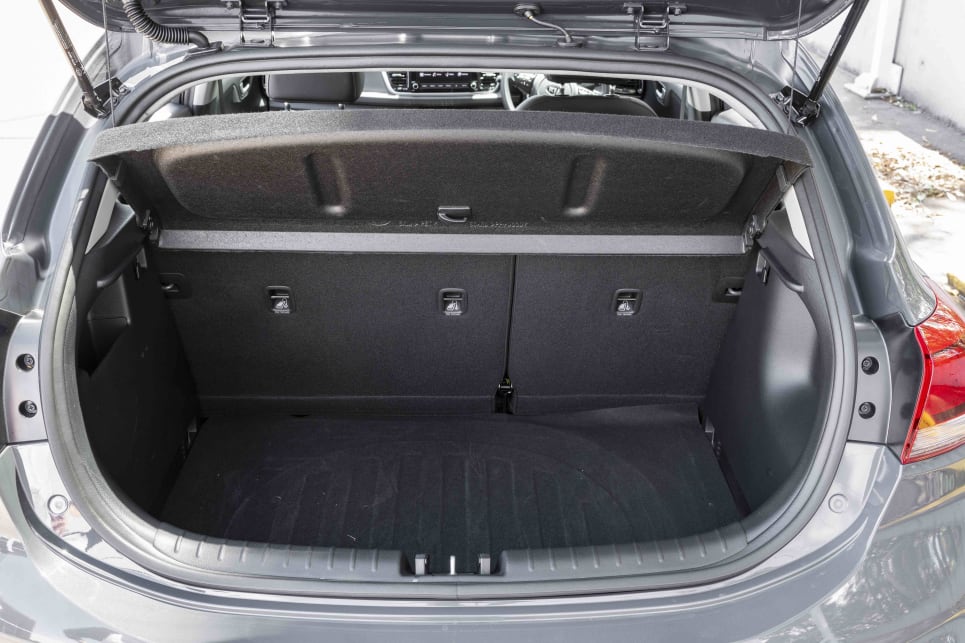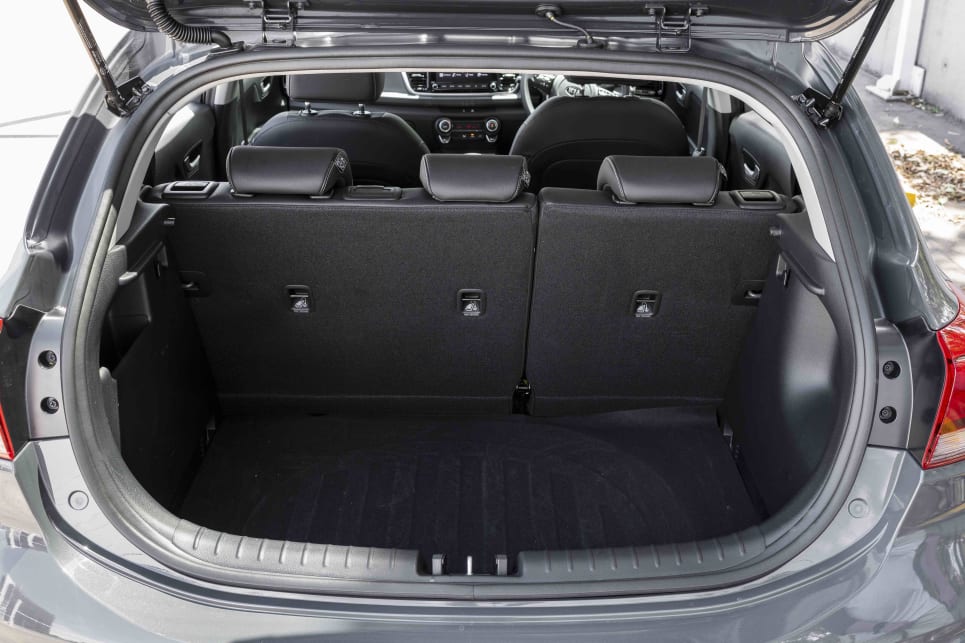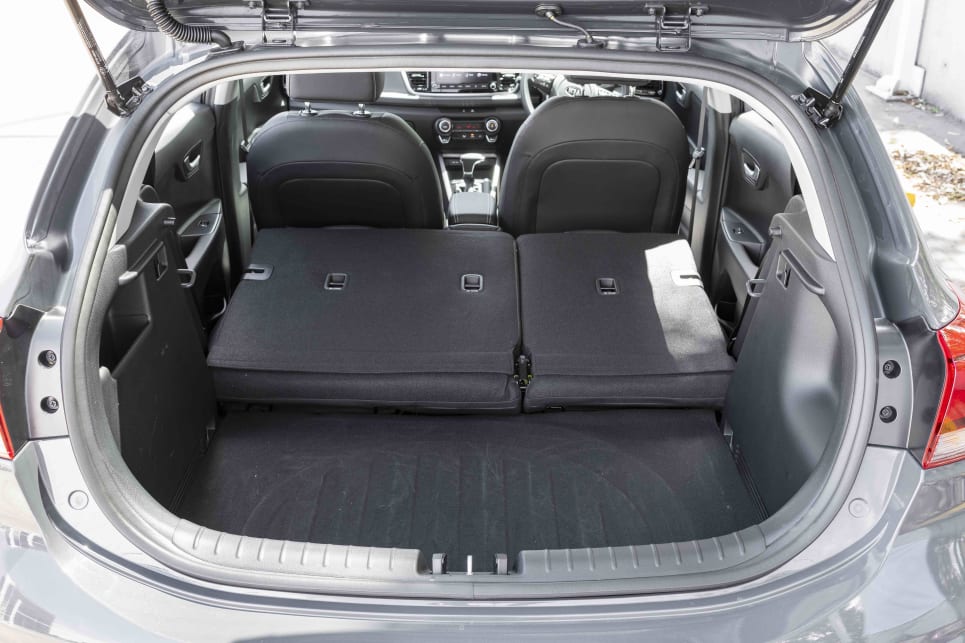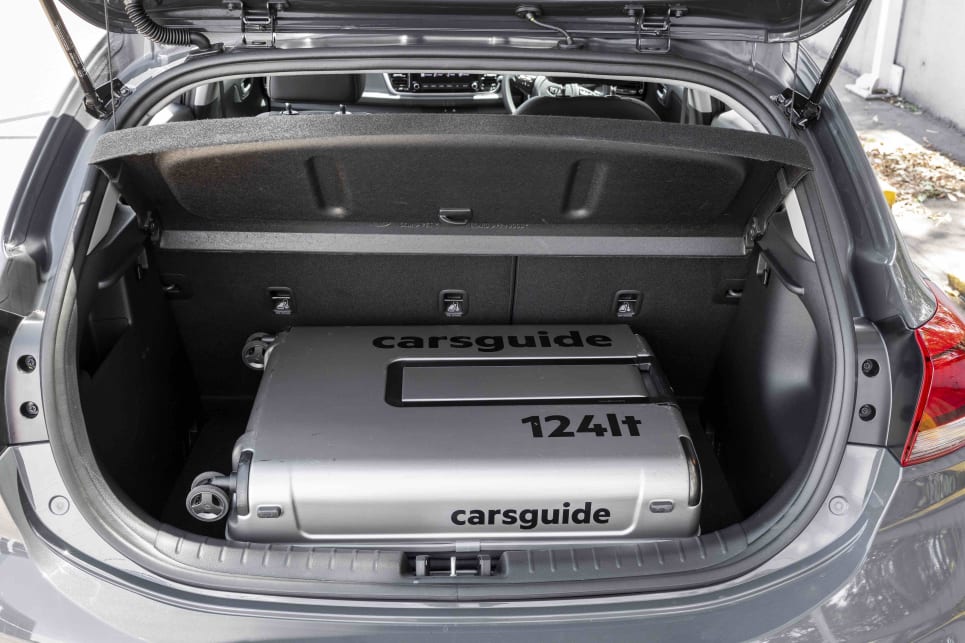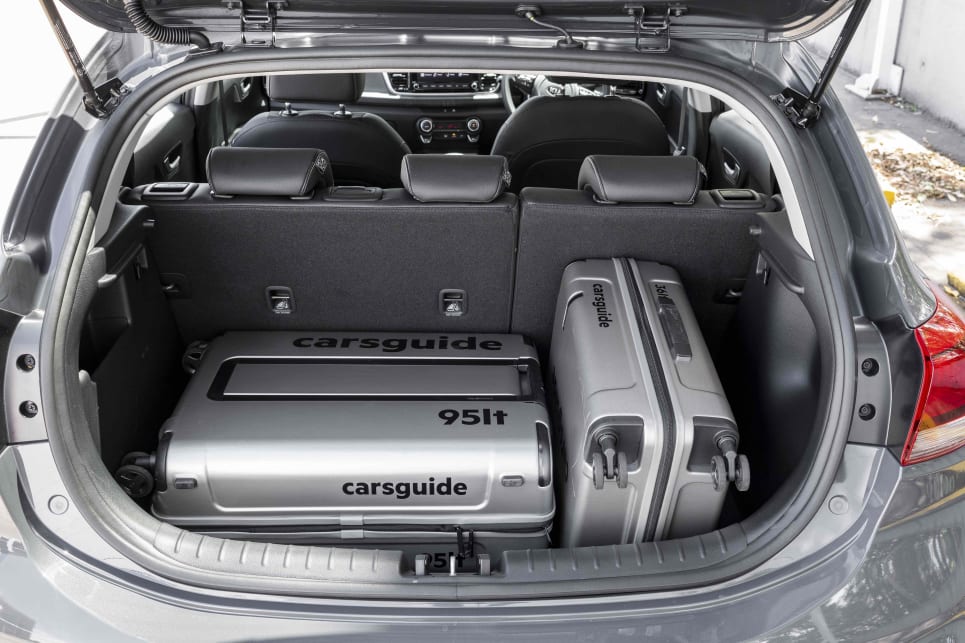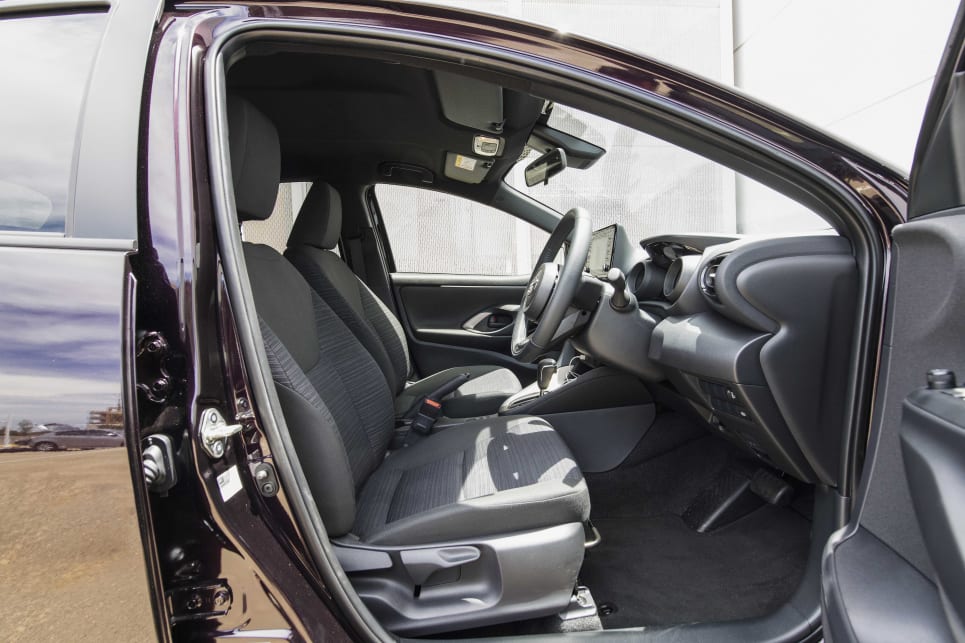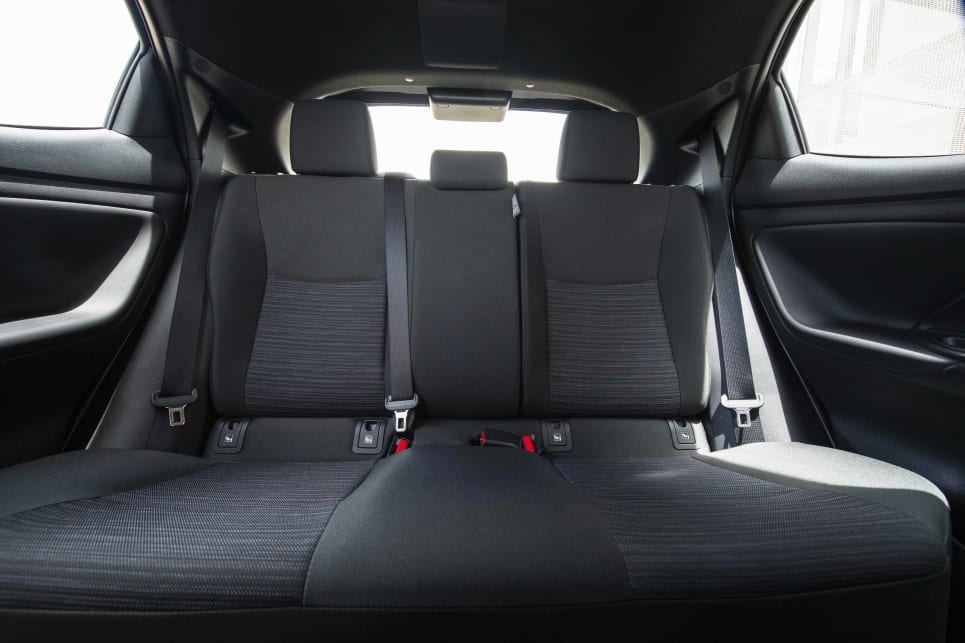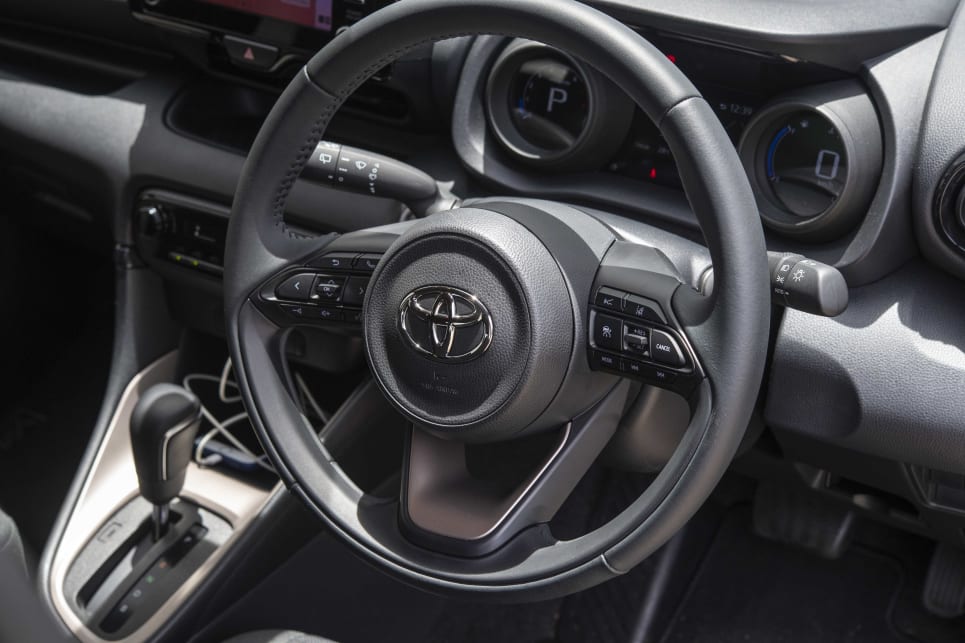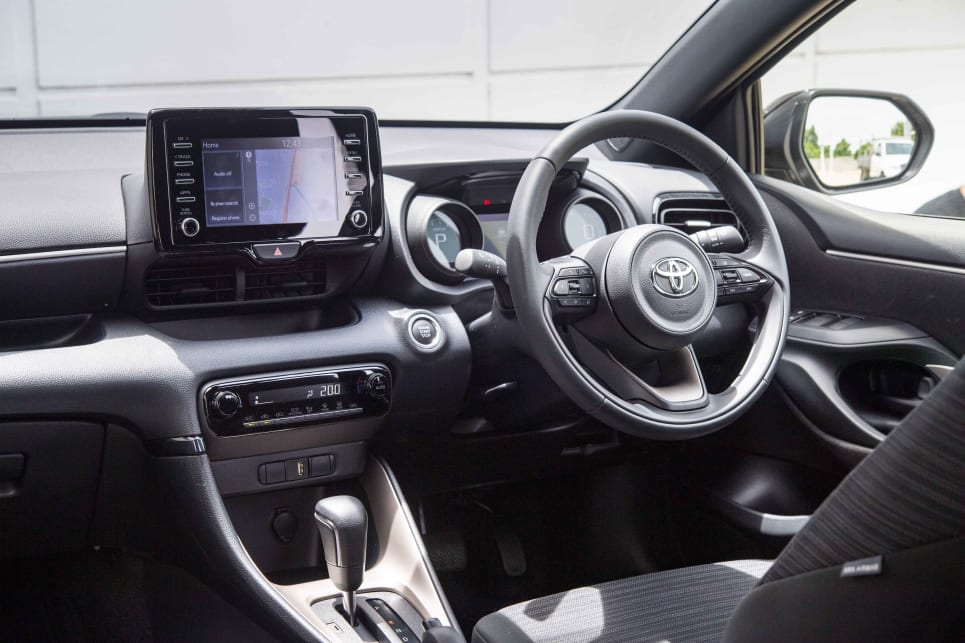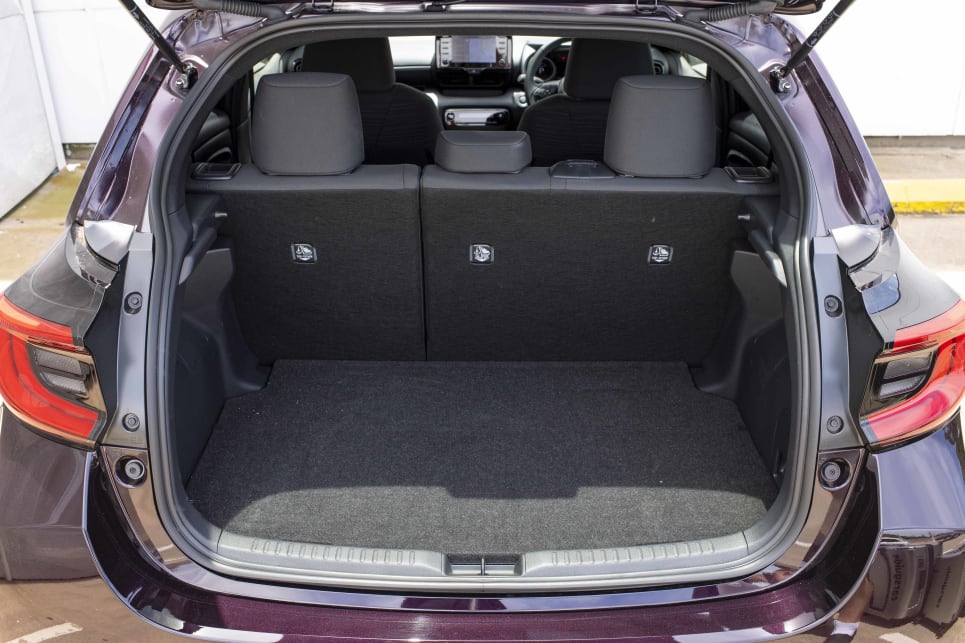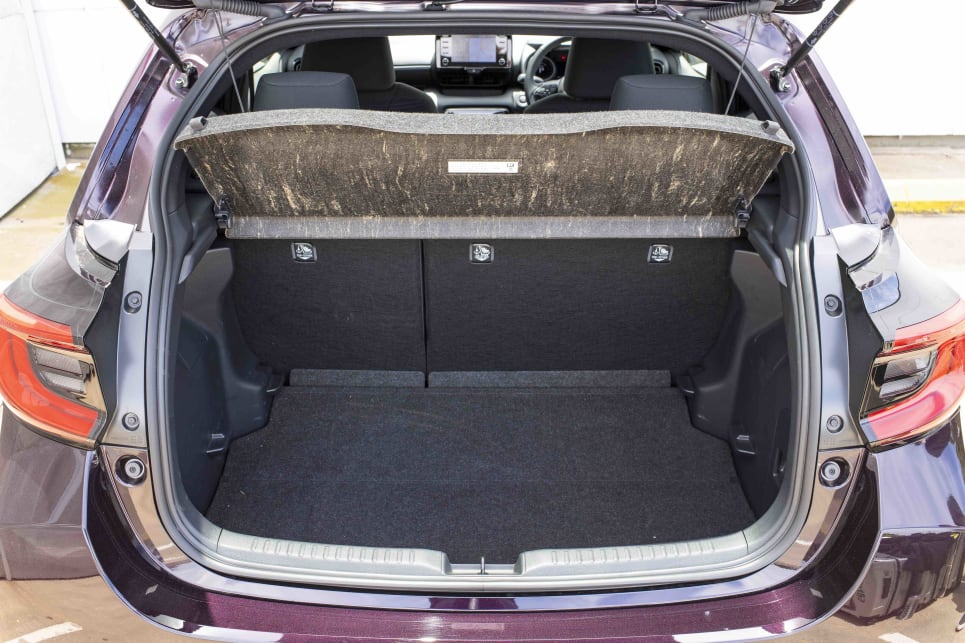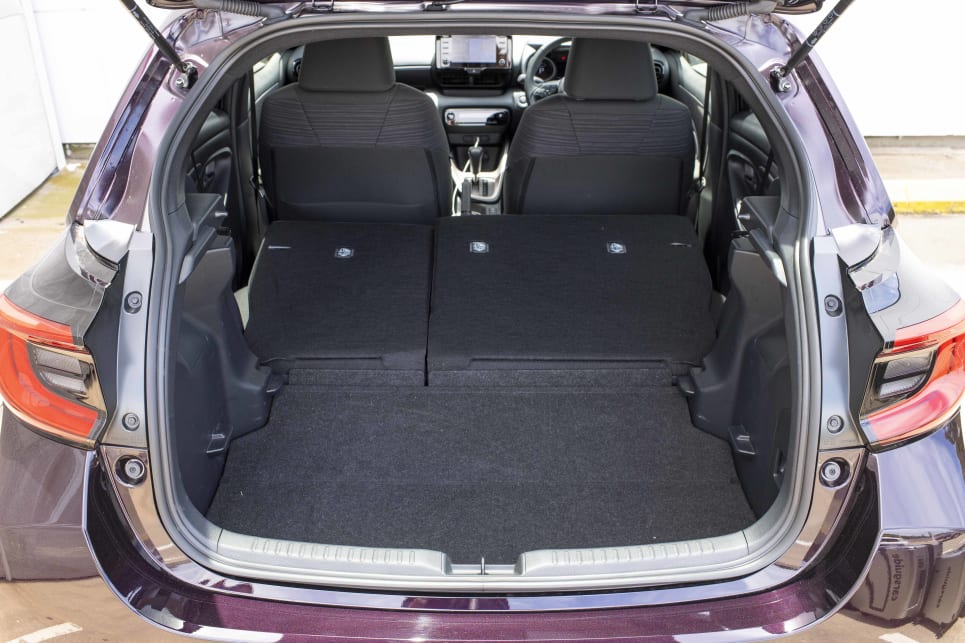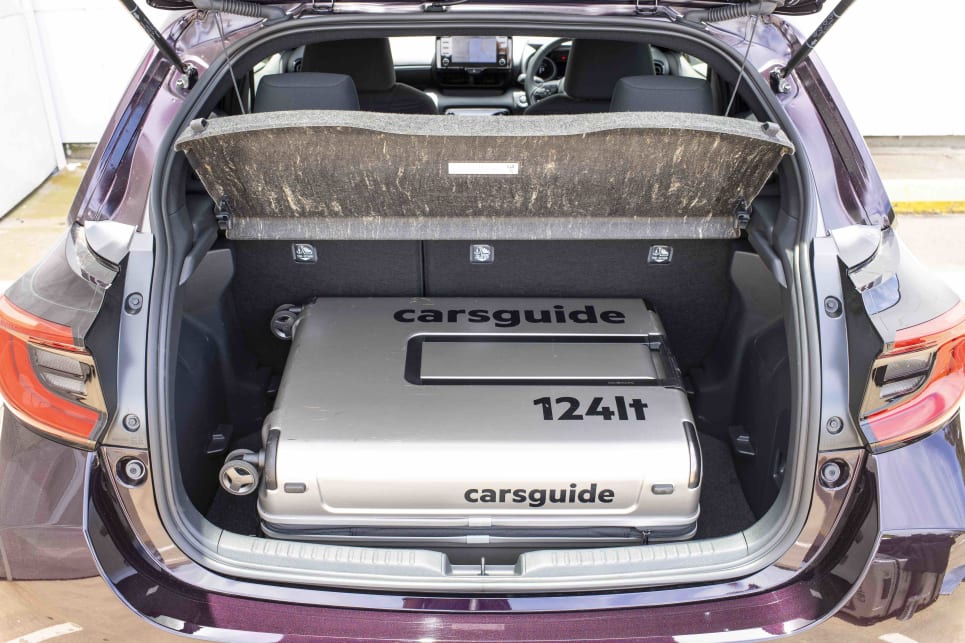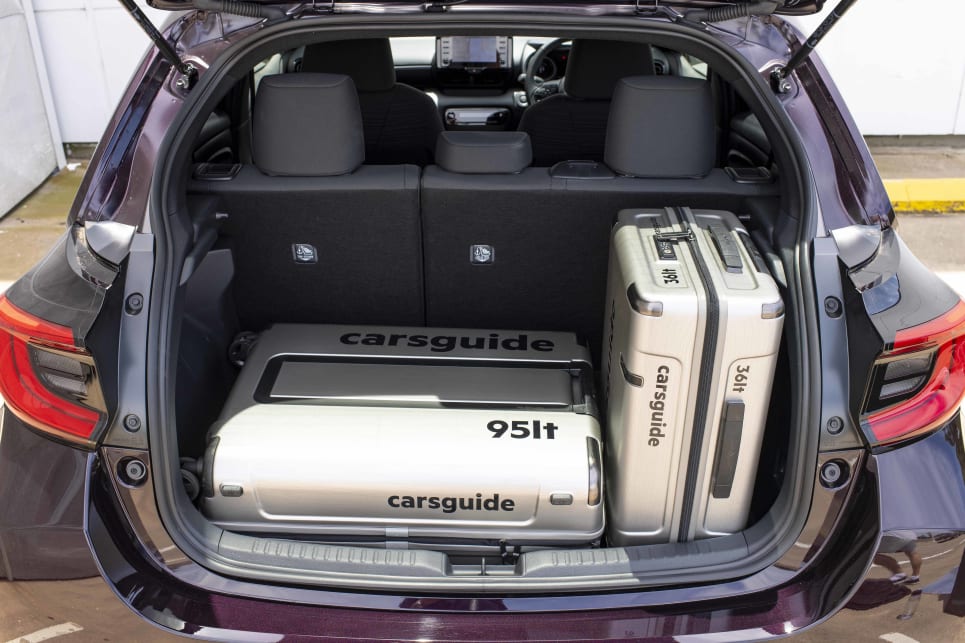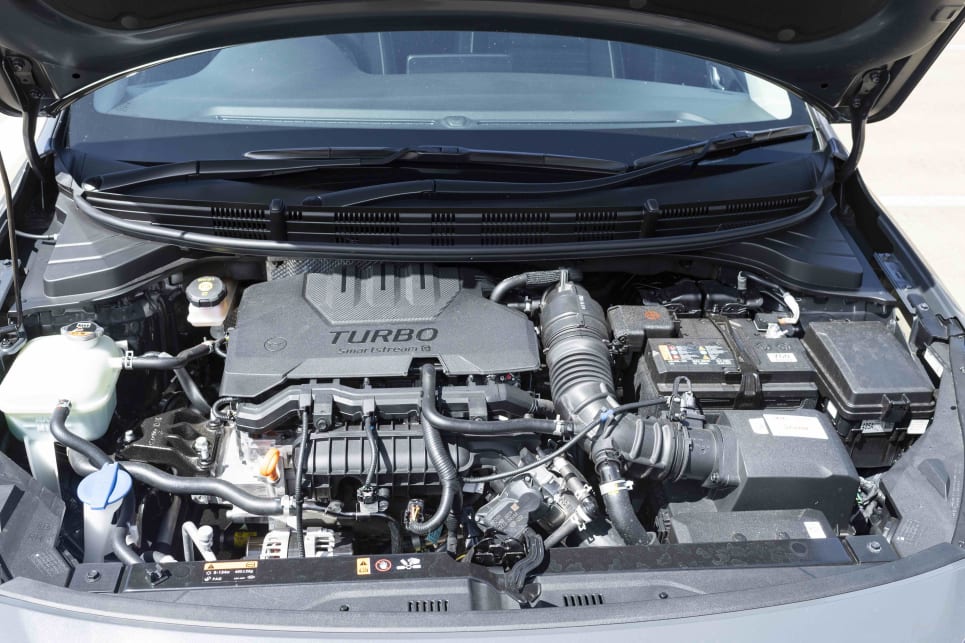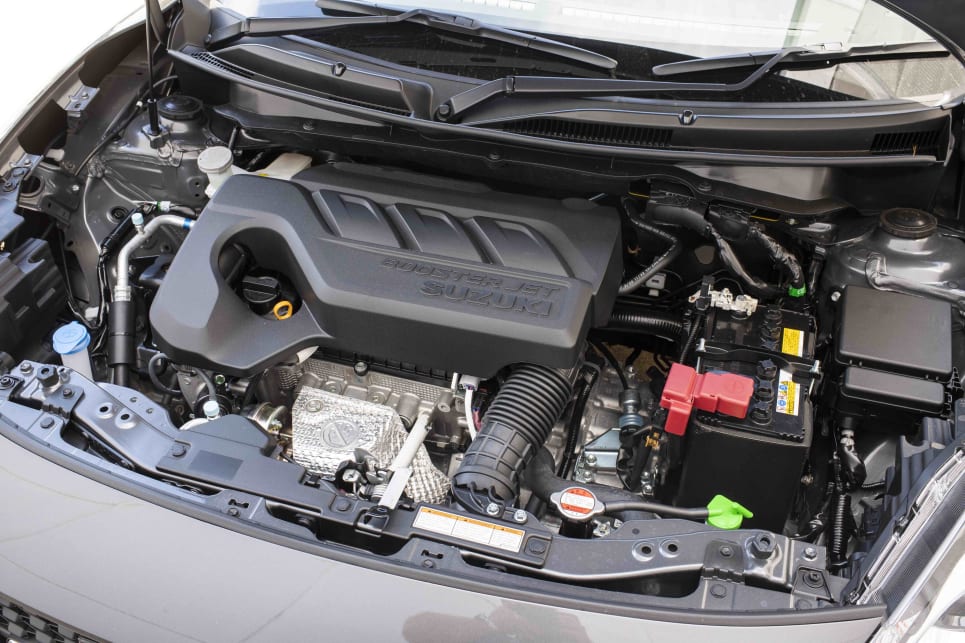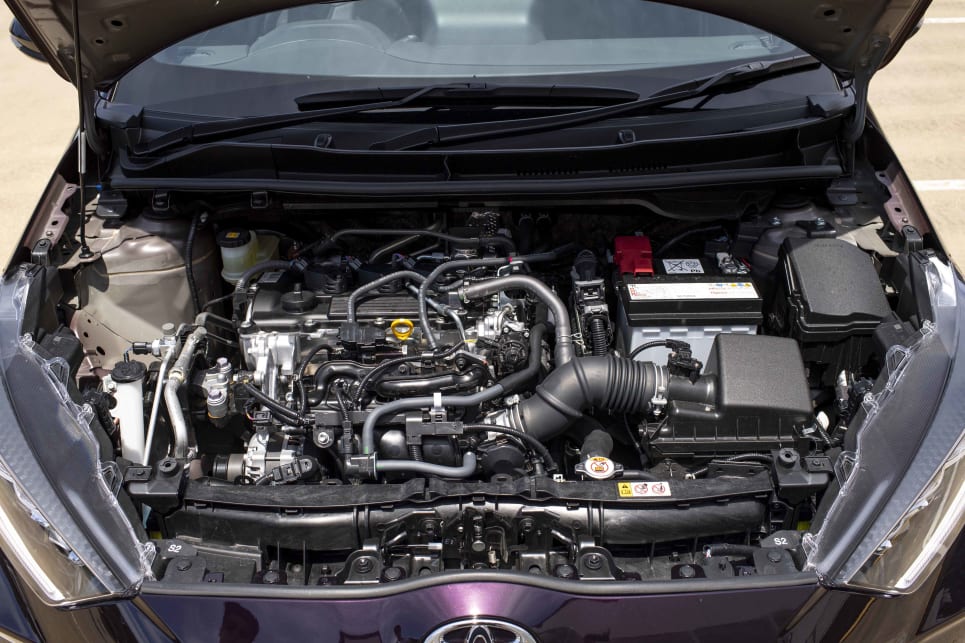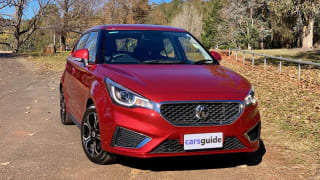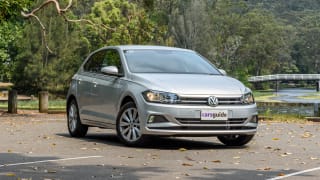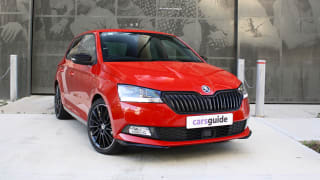Our test loop for these three cars included a good split of city driving, a short amount of freeway driving, and some curvy national park roads to round out the experience.
All three cars performed admirably, although each exhibited strengths and weaknesses.
Suzuki Swift GLX Turbo
-
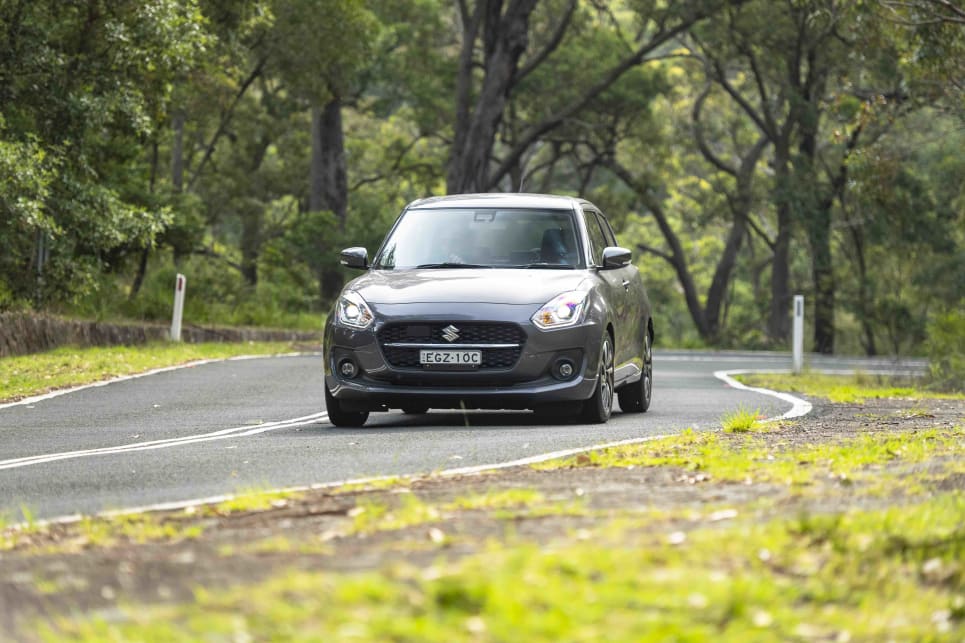 The Swift GLX Turbo is a fun little car to drive both in and out of the city (image credit: Rob Cameriere).
The Swift GLX Turbo is a fun little car to drive both in and out of the city (image credit: Rob Cameriere).
-
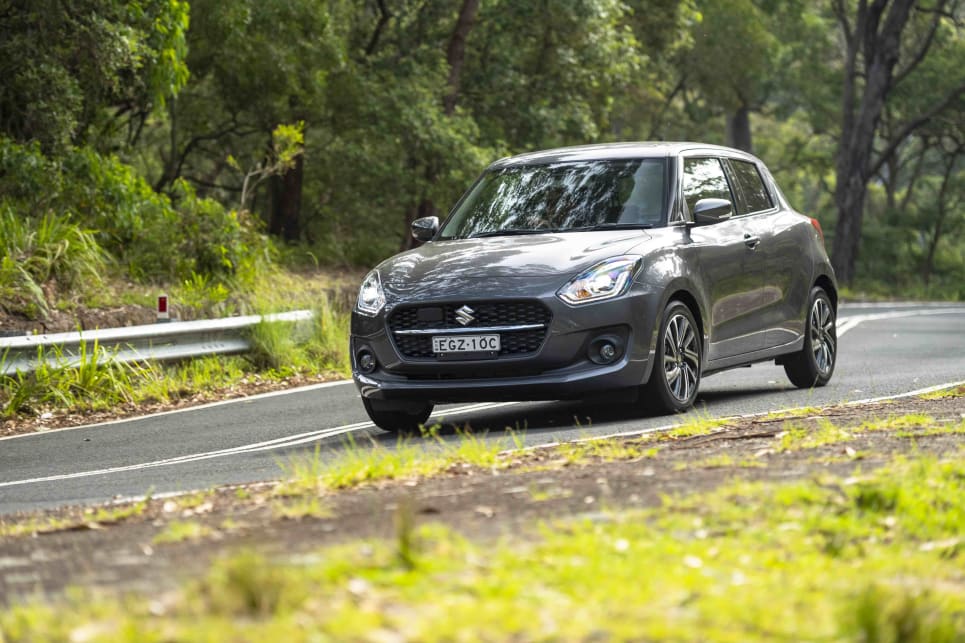 The Swift GLX Turbo is a fun little car to drive both in and out of the city (image credit: Rob Cameriere).
The Swift GLX Turbo is a fun little car to drive both in and out of the city (image credit: Rob Cameriere).
-
 The Swift GLX Turbo is a fun little car to drive both in and out of the city (image credit: Rob Cameriere).
The Swift GLX Turbo is a fun little car to drive both in and out of the city (image credit: Rob Cameriere).
-
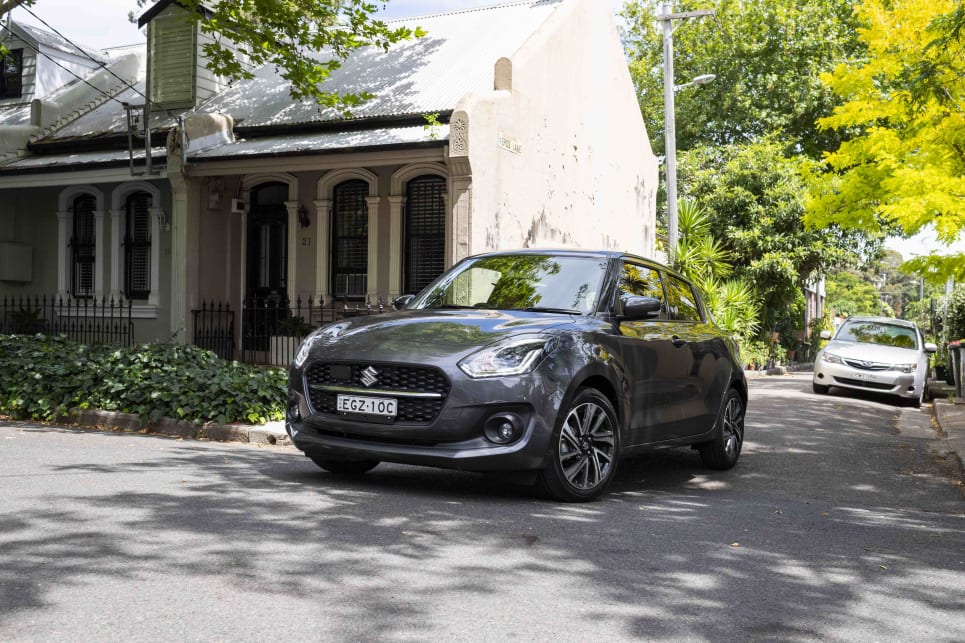 The Swift GLX Turbo is a fun little car to drive both in and out of the city (image credit: Rob Cameriere).
The Swift GLX Turbo is a fun little car to drive both in and out of the city (image credit: Rob Cameriere).
-
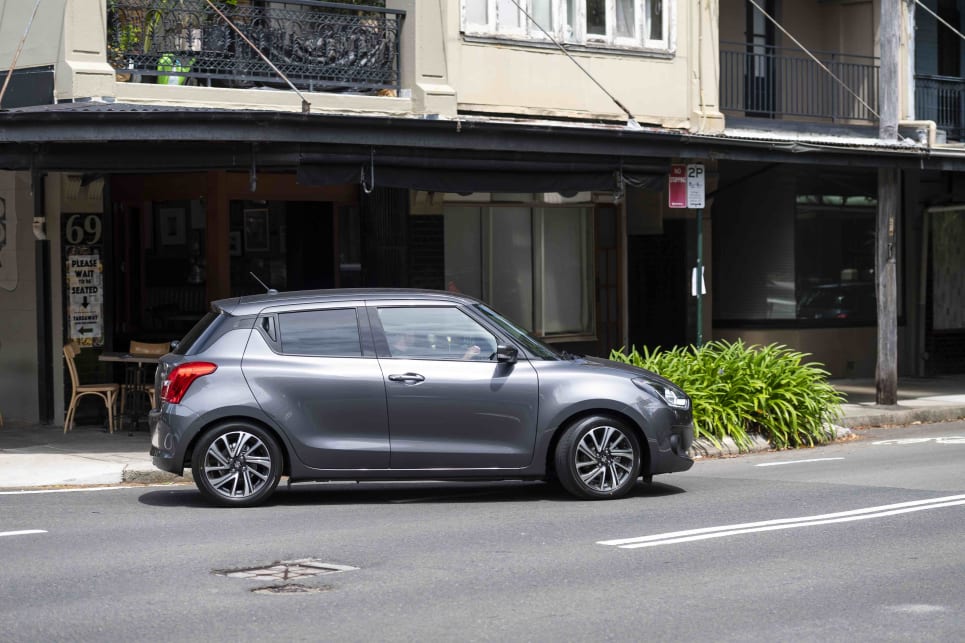 The Swift GLX Turbo is a fun little car to drive both in and out of the city (image credit: Rob Cameriere).
The Swift GLX Turbo is a fun little car to drive both in and out of the city (image credit: Rob Cameriere).
-
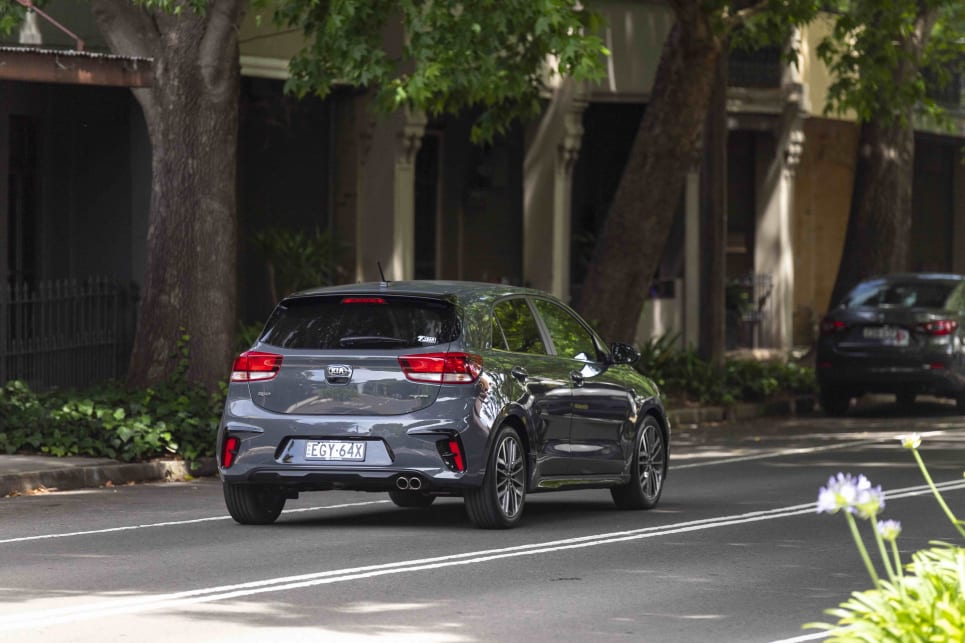 The Swift GLX Turbo is a fun little car to drive both in and out of the city (image credit: Rob Cameriere).
The Swift GLX Turbo is a fun little car to drive both in and out of the city (image credit: Rob Cameriere).
-
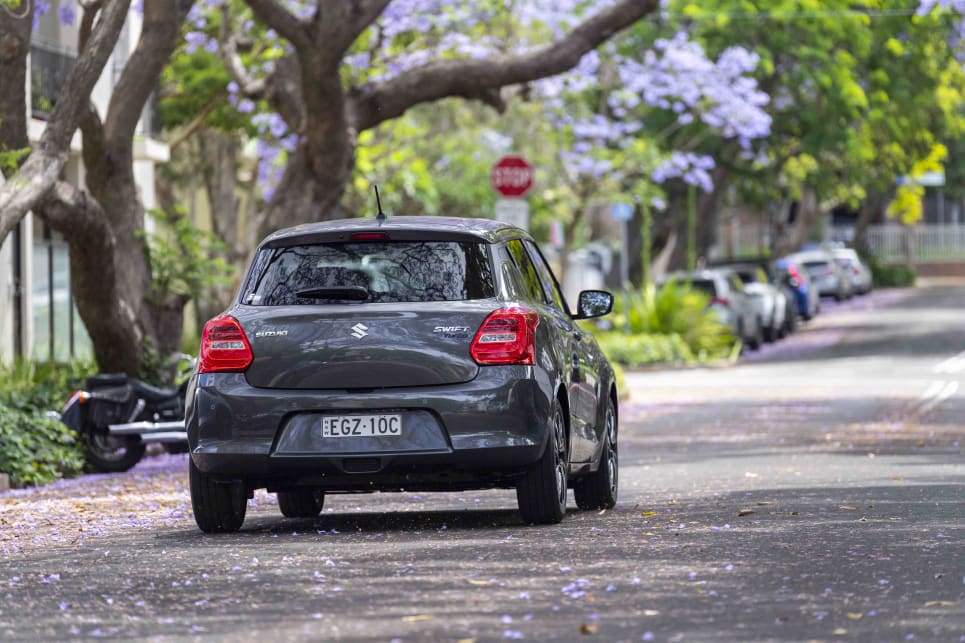 The Swift GLX Turbo is a fun little car to drive both in and out of the city (image credit: Rob Cameriere).
The Swift GLX Turbo is a fun little car to drive both in and out of the city (image credit: Rob Cameriere).
The Swift surprised us with how well it kept up with the other two on this test. One might assume from its budget origins it might be lacking dynamically in the corners, but that was not the case.
Make no mistake, the Swift GLX Turbo is a fun little car to drive both in and out of the city. Its engine and transmission seemed the least stressed of these models when loaded up with three occupants and driven up a hill, and always had plenty of power in reserve. Its six-speed auto was the most dependable transmission of these cars too, with predictable and linear progression both up and down the gears.
The ride in the Swift is a mixed bag. The front suspension is soft, helping it deal with bumps in the city well, while its torsion beam rear unsettled it on harsher surfaces, where you could really feel the unevenness between this car’s axles. The taut rear-end did have a benefit of keeping the Swift truly under control in the corners, however. Overall the GLX Turbo manages to split the difference between the ride of the other two cars. It’s not as harsh as the Rio, but not as sophisticated and comfortable as the Yaris.
Kia Rio GT-Line
-
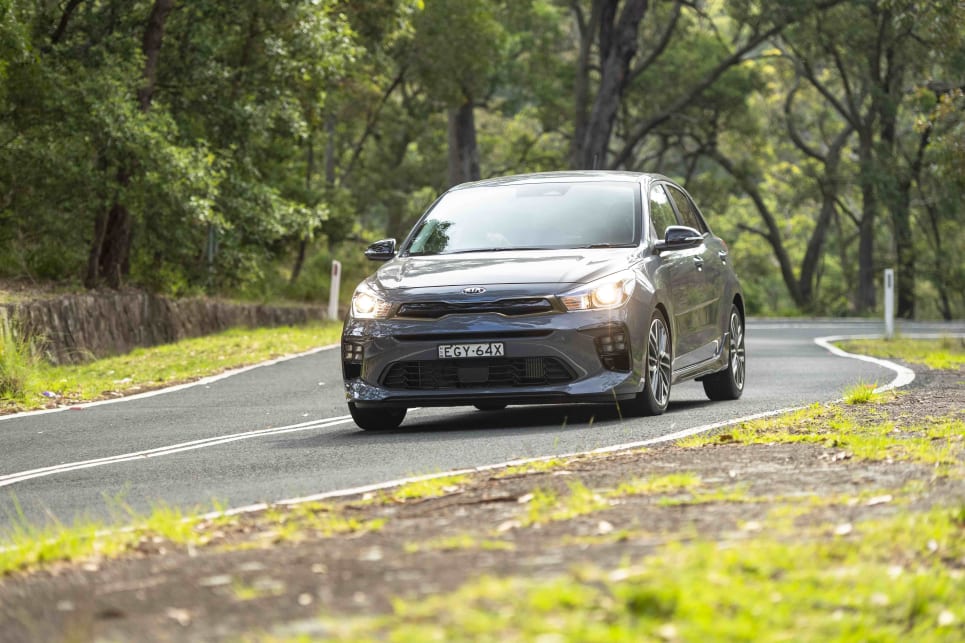 The Rio GT-Line feels as sporty as it looks (image credit: Rob Cameriere).
The Rio GT-Line feels as sporty as it looks (image credit: Rob Cameriere).
-
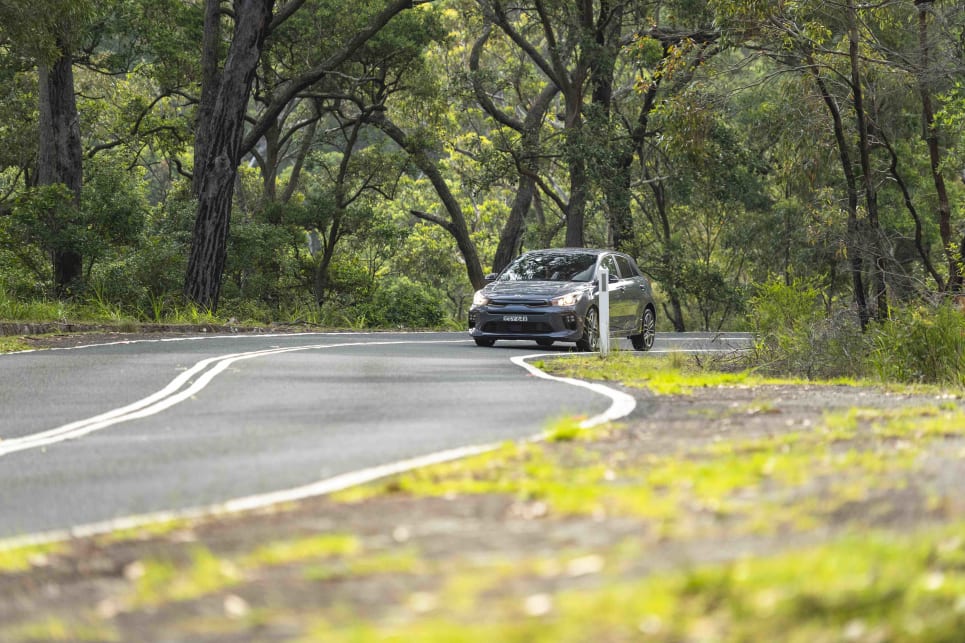 The Rio GT-Line feels as sporty as it looks (image credit: Rob Cameriere).
The Rio GT-Line feels as sporty as it looks (image credit: Rob Cameriere).
-
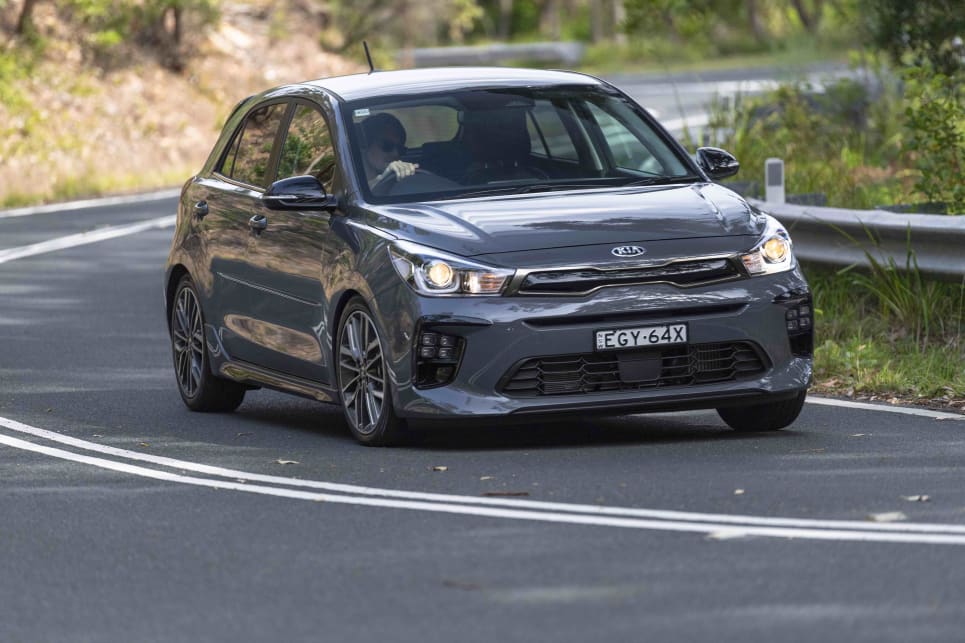 (image credit: Rob Cameriere).
(image credit: Rob Cameriere).
-
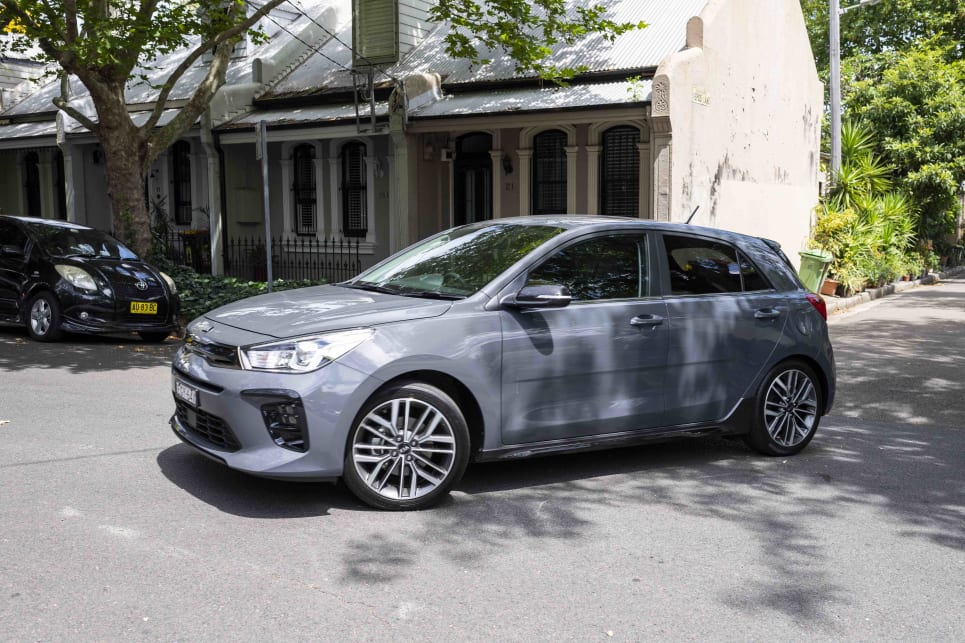 The Rio GT-Line feels as sporty as it looks (image credit: Rob Cameriere).
The Rio GT-Line feels as sporty as it looks (image credit: Rob Cameriere).
-
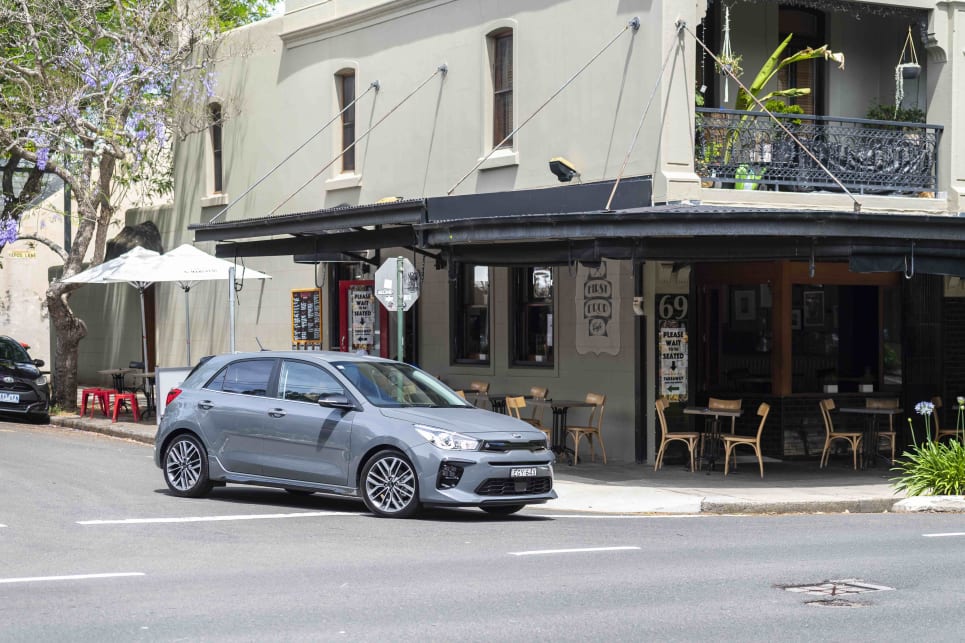 The Rio GT-Line feels as sporty as it looks (image credit: Rob Cameriere).
The Rio GT-Line feels as sporty as it looks (image credit: Rob Cameriere).
-
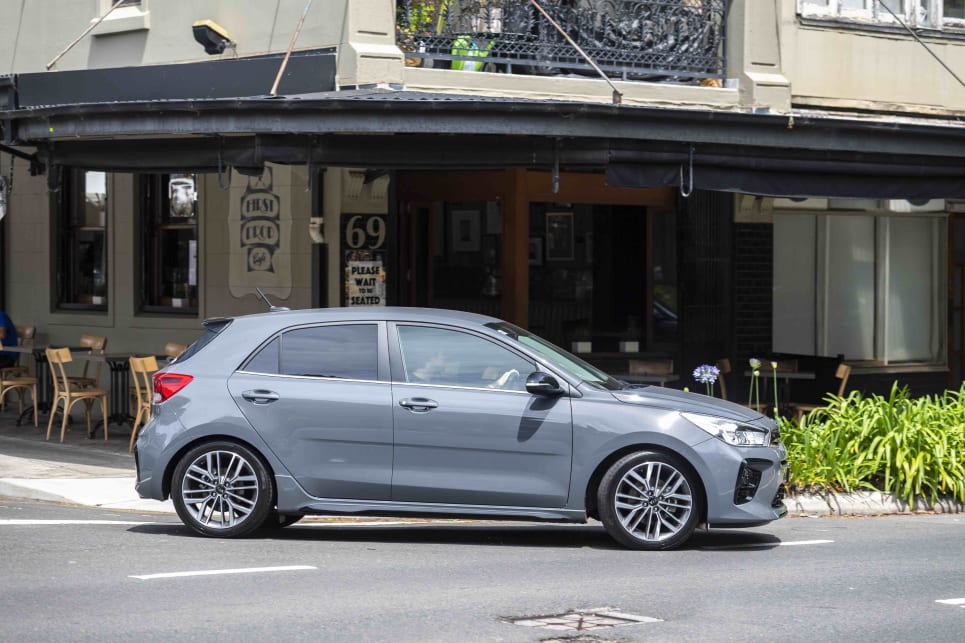 The Rio GT-Line feels as sporty as it looks (image credit: Rob Cameriere).
The Rio GT-Line feels as sporty as it looks (image credit: Rob Cameriere).
-
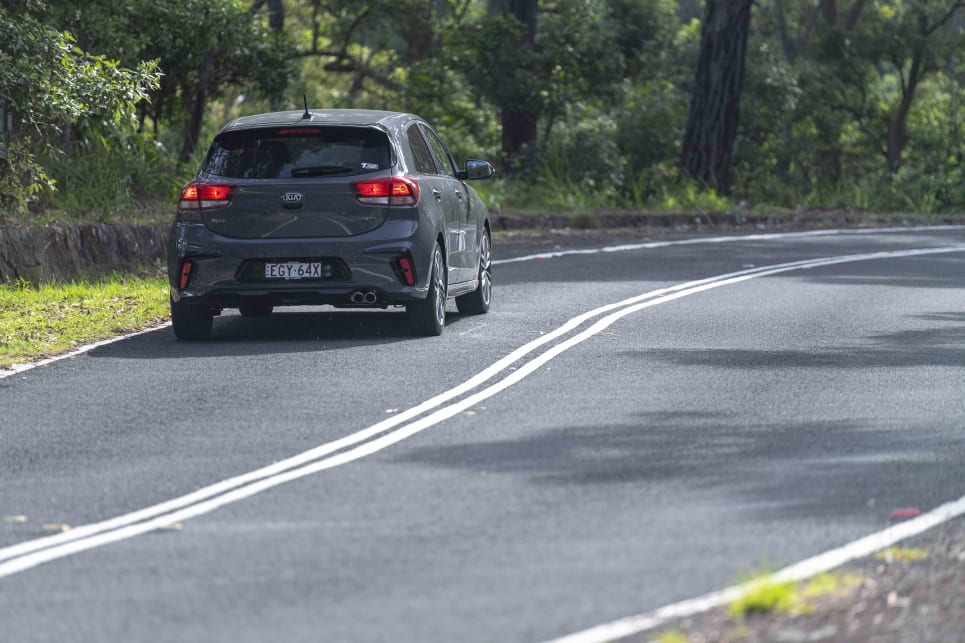 The Rio GT-Line feels as sporty as it looks (image credit: Rob Cameriere).
The Rio GT-Line feels as sporty as it looks (image credit: Rob Cameriere).
Next up is the Rio GT-Line. This car felt as sporty as it looks - for better or worse.
You’ll notice its harsh interior appointments are met with a sharp and noisy ride around town. The 17-inch wheels look great but allow a lot of tyre roar to penetrate the cabin at all speeds. The wheels also don’t help with the ride which can be quite rough over uneven and corrugated roads.
Also immediately annoying in the Rio is the weird steering. It’s artificially weighted in all driving modes, with it feeling far too heavy in Normal or Eco, then disarmingly light in Sport. This seems the wrong way around to us.
It has the most complicated drivetrain, with a dual-clutch automatic mated to a turbocharged engine with stop start. This can be inconvenient around town, as the Rio does have to overcome a dollop of turbo-lag from a standstill. The dual-clutch also isn’t as super slick as some VW Group units can be, and can be caught off-guard on occasion.
Where the Rio comes alive though is when you’ve got a bit of open road and a few corners. With its aggressive rubber, firm chassis and suspension, and direct (if a little light) steering in Sport mode, this car was an absolute pleasure to steer. Its gnarly little turbo three-pot had by far the best note of the three, and I was astounded by how stark the difference was between the roadholding of this car and the other two. It’s by far the driver’s choice but get ready to fork out for pricey replacement rubber.
Toyota Yaris SX petrol
-
 The Yaris ride is well balanced between soaking up bumps and turning into corners (image credit: Rob Cameriere).
The Yaris ride is well balanced between soaking up bumps and turning into corners (image credit: Rob Cameriere).
-
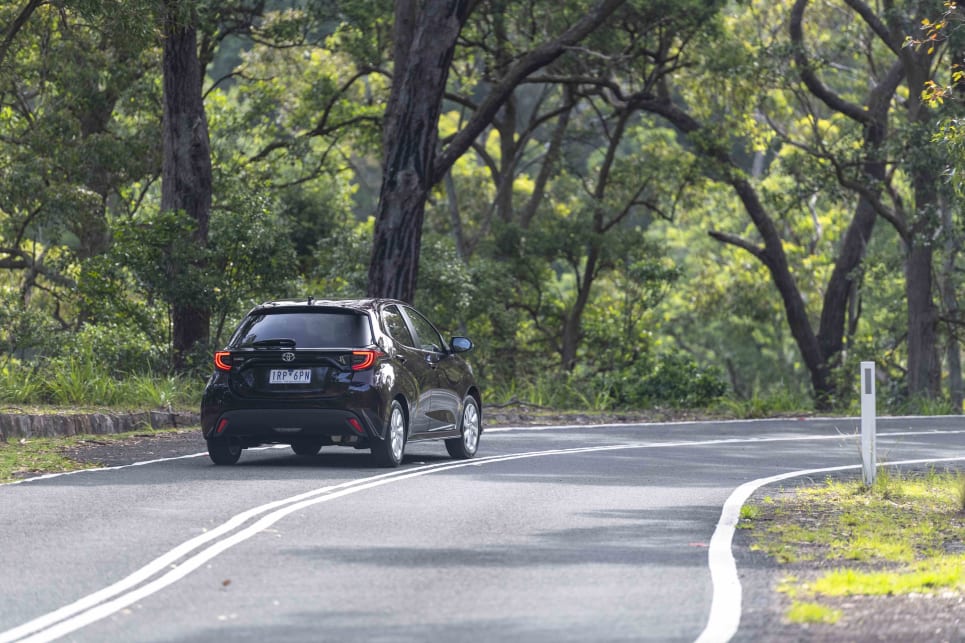 The Yaris ride is well balanced between soaking up bumps and turning into corners (image credit: Rob Cameriere).
The Yaris ride is well balanced between soaking up bumps and turning into corners (image credit: Rob Cameriere).
-
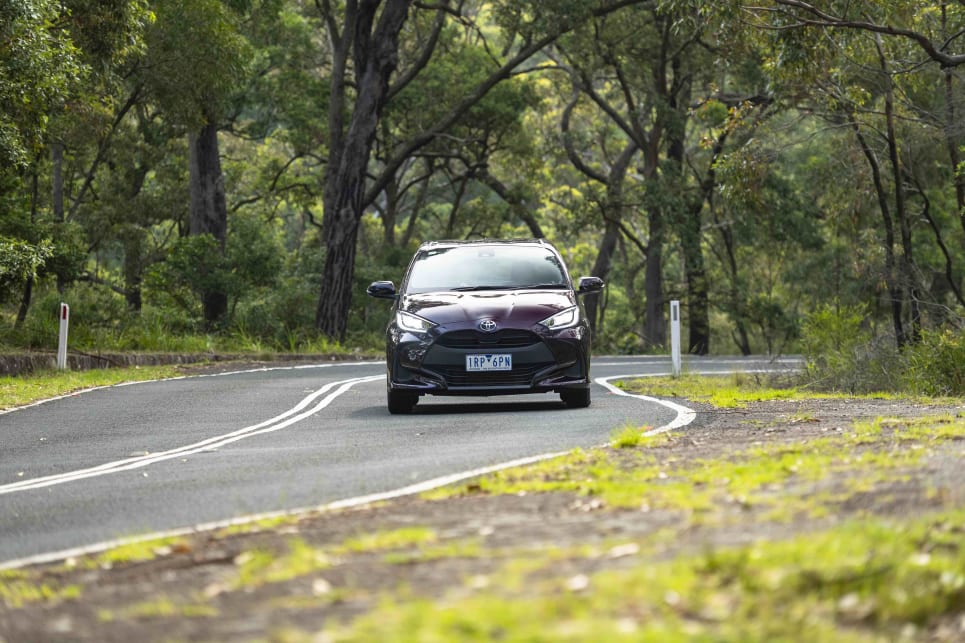 The Yaris ride is well balanced between soaking up bumps and turning into corners (image credit: Rob Cameriere).
The Yaris ride is well balanced between soaking up bumps and turning into corners (image credit: Rob Cameriere).
-
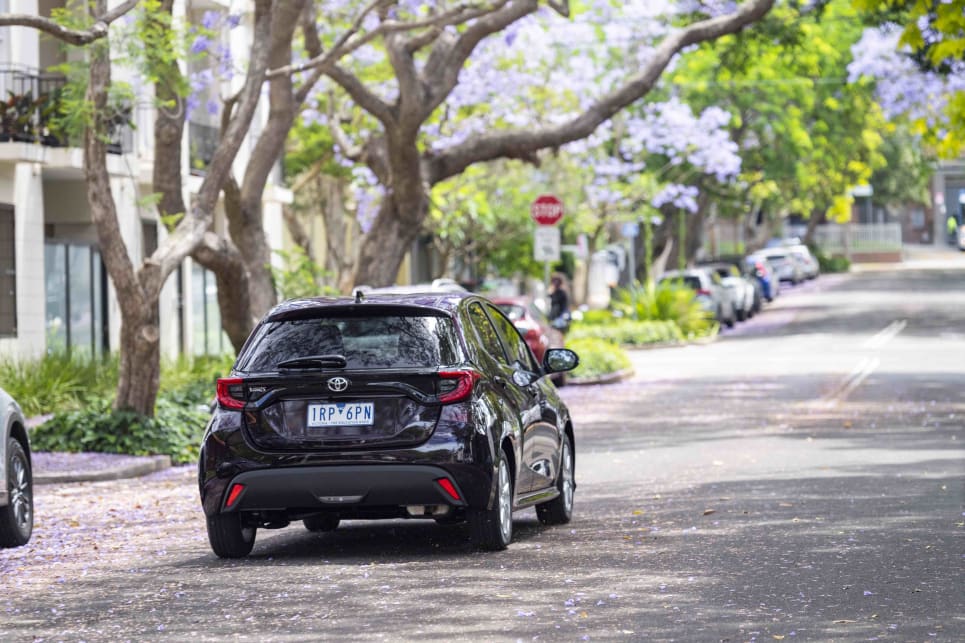 The Yaris ride is well balanced between soaking up bumps and turning into corners (image credit: Rob Cameriere).
The Yaris ride is well balanced between soaking up bumps and turning into corners (image credit: Rob Cameriere).
-
 The Yaris ride is well balanced between soaking up bumps and turning into corners (image credit: Rob Cameriere).
The Yaris ride is well balanced between soaking up bumps and turning into corners (image credit: Rob Cameriere).
-
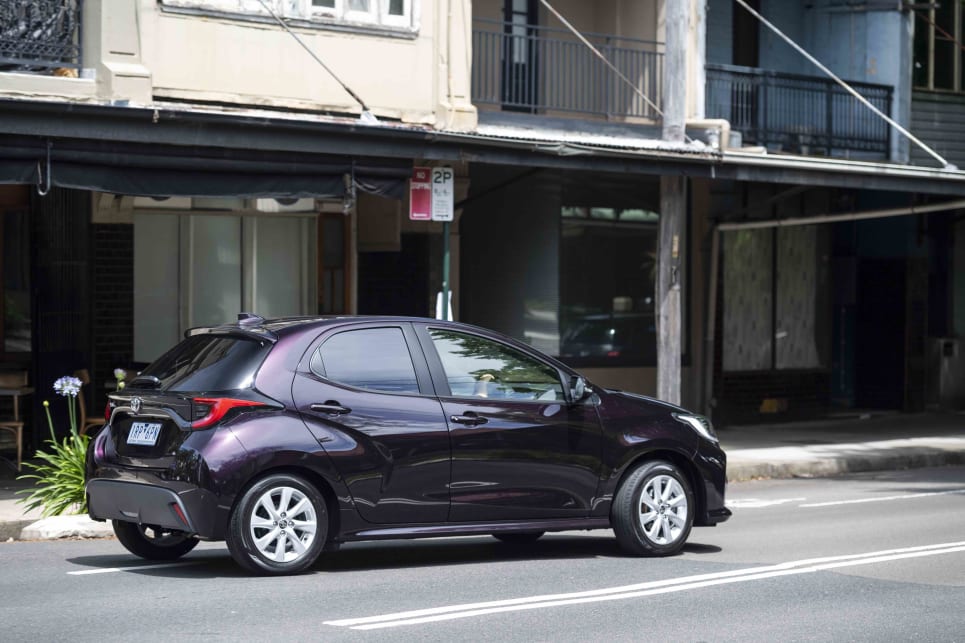 The Yaris ride is well balanced between soaking up bumps and turning into corners (image credit: Rob Cameriere).
The Yaris ride is well balanced between soaking up bumps and turning into corners (image credit: Rob Cameriere).
-
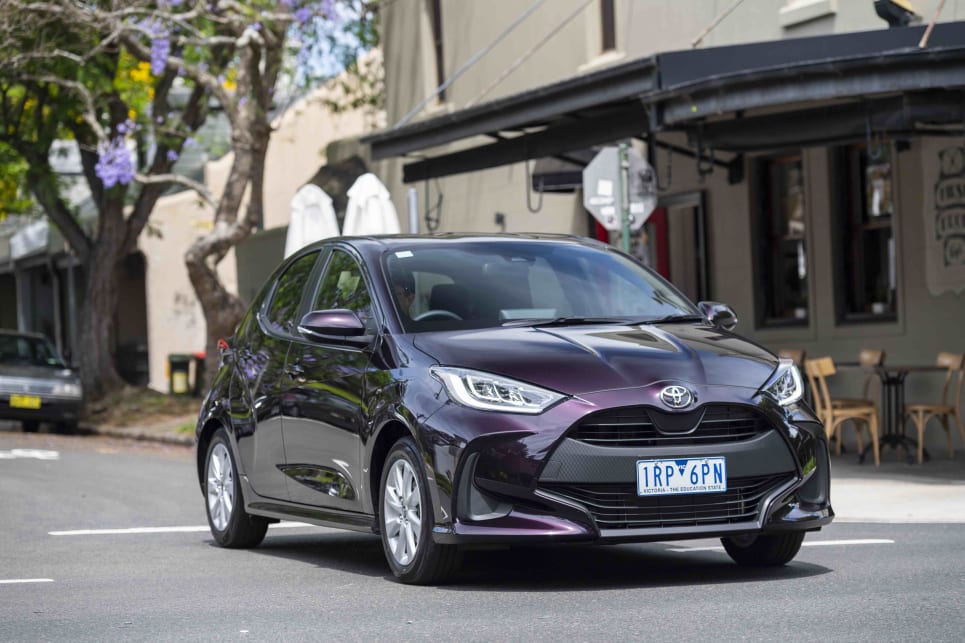 The Yaris ride is well balanced between soaking up bumps and turning into corners (image credit: Rob Cameriere).
The Yaris ride is well balanced between soaking up bumps and turning into corners (image credit: Rob Cameriere).
Finally, there’s the Yaris. Is there any benefit behind the wheel for its hefty extra cost? Turns out, there certainly is. Toyota has gone to town with its TNGA underpinnings and made this car comfortable and confident. Its ride is so well balanced between soaking up bumps and turning into corners it easily ranks as the nicest car to be behind the wheel of, both in and out of town.
The Yaris’ steering is superbly weighted on the lighter side, and I’d say its cabin ergonomics were the best, too.
Yes, it has a CVT automatic, which I know will have some readers rolling their eyes, but it certainly doesn’t feel like it – even when pushed it jumps through its artificially stepped ratios nicely without much of the CVT signature rubbery feeling, and around town takes off from the lights smoothly too thanks to that 'launch gear'.
The Yaris’ 1.5-litre engine keeps up on the power front and progresses with some urgency when you need it but still lacks the turbocharged shove that makes the other two cars on this test so much fun.
This engine also makes an ugly sound at 3000rpm and above, and it’s loud a lot of the time. This is an avoidable shame, and really takes you out of its otherwise relatively quiet and comfortable cabin ambiance.
Another area we really noticed the Yaris couldn’t keep up was its stock tyres. On our open road section of the drive they limited the Yaris’ cornering appeal compared to the other cars on test quite notably. At least this one is an easy fix.
Really then, the Yaris has its best traits in the city where it belongs. We asked ourselves on the drive day which of the three cars here we’d rather take home if you had to drive it every day for the next six months, and two out of three agreed the Yaris was easily the go despite a handful of shortcomings.
Kia Rio GT Line - 8
Suzuki Swift GLX Turbo - 7
Toyota Yaris SX petrol - 8



